|
If November isn't my favorite month to observe here in Washington, DC, it's right up there with March and April. Most nights are cool, crisp, and imbued with an ineffable fragrance - of decaying leaves in autumn, of budding blossoms in spring - that encourages deep breaths. The mosquitoes are resting after (or before) the horrors of summer, and seeing hasn't yet slumped to its winter lows. I try to use my telescopes as much as I can in late autumn and late spring, but there's a problem: these are the busiest times in the academic calendar, and it's not always easy to juggle my hobby with my work. Worse, both seasons are times of unrelenting illness for any parent with young children. So it is that while the sky has been routinely clear for the last month, with seeing typically average, I haven't had much chance to exploit it. Finally, on November 13th, I felt just healthy enough to venture outside with my TSA 120. At just before midnight, Jupiter was nearing zenith. Although atmospheric conditions were not exactly ideal, I couldn't pass up the chance to have a look. I had let my TSA 120 sit outside for about 45 minutes before using it, and it paid off: while temperatures were no higher than 10 degrees Celsius, the telescope had completely cooled down. Yet when I turned to Jupiter, the planet initially resembled a circle of bubbling milk, surrounded by a smattering of drops (the Galilean moons). Why had I sacrificed sleep for this? Then, as I considered packing up, the atmosphere abruptly stabilized - and now a staggering wealth of detail shimmered into view. It was fleeting - "revelation peeps," to use a Lowellian term, often are - but it was more than enough to keep me glued to the eyepiece. Over the next hour, belts, zones, and the Great Red Spot all flickered across the pale Jovian disc, and I nearly lost track of time. Finally, it dawned on me that even a bad night's sleep was slipping away, and I hastily carried my equipment inside. Perhaps it's a character flaw that I like to obsessively compare my instruments; if so, it is a flaw I share with most amateur astronomers. In this case, I couldn't help but reflect on the TEC 140 I once owned. In a vacuum, I might prefer that telescope over the TSA 120. But the difference in the optical performance of both telescopes is slight enough that I prefer the far greater portability of my TSA 120 setup. It weighs half as much, and that makes it so much easier to use when I'm tired. Of course, when it comes to portability and ease of use it's hard to beat my EVScope 2. With Orion starting to rise high above the horizon in the wee hours of the night, I decided to use that telescope to view the constellation's famous nebula. On the 18th I parked the telescope in my backyard, found a gap in the increasingly bare trees, and had a look. As usual, within seconds the EVScope delivered a view that no traditional telescope could match under an urban sky. Yet using the telescope so soon after observing with my TSA 120 gave me a clear sense of what bothers me about it. The EVScope is easy. There are no "revelation peeps" - no flashes of transcendence - because everything is smoothed out in a (relatively) pretty picture. There's no craft to observing, no sense of taking in the universe with your own eyes. You see more - but you feel less. Sometimes, that's okay. There are whole classes of object - white dwarfs for example - that I can only glimpse with my EVScope (at least in our light-polluted skies). Yet if I were forced to give up one telescope, I would choose the EVScope without a second's hesitation. My health improved this week, and my workload (temporarily) eased. Now I steeled myself for a challenge I've dreaded for weeks: collimating my new Mewlon 210. I've been so unwilling to try it that I even - very briefly - placed the telescope for sale. Yet I read up, prepared my Allen key - and left the Mewlon out for an hour to cool down.
When I returned outside, I found that the telescope still had not completely acclimated to temperatures that were not far above freezing. I waited another half hour, then tried again. Now the telescope seemed cool enough, but to my surprise my first view of a star was so underwhelming that I again considered whether to sell the telescope. A blob is the best I could get - a far cry from the pinpoints I see through my refractors. I'd hoped that I'd been wrong about the Mewlon's collimation, but now there was no doubting it: the telescope's secondary mirror simply did not perfectly align with the primary. I set to work tightening bolts, and to my surprise I didn't mind it. Years of tinkering with mechanical watches and bicycles had prepared me well, I suppose, because after 15 largely painless minutes I was just about done. I could scarcely believe my eyes when I returned to that star. Instead of a blob, there was a perfect little diamond. To my amazement, the telescope's diffraction spikes - a product of the four vanes that hold its secondary mirror - actually added to the star's beauty. It wasn't perfect - seeing was actually below average - but it was about as beautiful a stellar image as I can remember seeing. Jupiter offered some of the same revelation peeps I'd enjoyed with my TSA 120, except with a bit more color (and this time, the diffraction spikes were a bit distracting at lower magnifications). Turning to the Trapezium in Orion clearly revealed five, perhaps six stars - a challenge for fine optics even in good seeing - but it was Betelgeuse that truly stole the show. The star was simply a spectacularly beautiful orange gemstone when viewed through the Mewlon. The telescope's large aperture (compared to my refractors), total lack of false color, and yes, diffraction spikes made me appreciate simple stars as I never have before. With any luck, I'll use the Mewlon to spend happy hours admiring the double stars that are easily visible in our city. But on this night, it was time to pack up - and to banish all thought of selling the Mewlon.
0 Comments
It was midnight on September 1st, and the atmosphere was about as good as it gets for stargazing here in Washington, DC. Transparency was high, seeing was great, Saturn was high in the sky and Jupiter was wheeling over the horizon. My had prepared my TEC 140 in the living room, and prepared to haul it outside. I knew I'd have to walk for a few minutes, and I tried to figure out how best to do it. The telescope itself is just over 20 pounds. The DM-6 mount that holds it well? With its extender, also just north of 20 pounds. The Planet tripod that keeps it all stable? Another 27 pounds. With my eyepieces and including all the cases and bags that house the gear, I was looking at hauling more than 80 pounds. That might have seemed doable were it not for the size everything took up. I simply could imagine no way to drag my gear to my only nearby observing site in fewer than two - possibly three - walks. It had been a long day at work, and I was still tired from recent travels. I left my gear in place. There would be other nights. The next morning, it dawned on me that something was out of whack. Since my little backyard faces north and is usually too shrouded by leaves to be useful for astronomy, I need to be able to easily transport my gear to a more suitable spot. Last year I bought a wagon to make that easier, but dragging it around turned out to be nearly as difficult as carrying my equipment. Given my need to walk to observe, I'd long ago decided that my heaviest telescope would be a medium-sized refractor, and the TEC seemed like the best option available. Somehow, however, I'd ended up with a heap of gear that was almost impossibly heavy to walk with. What happened? Well, it turns out that in amateur astronomy - as in many other things - a sufficient number of little changes can collectively create a new paradigm. The trouble was that the TEC 140 is just a bit heavier and (especially) longer than a medium-sized mount can handle, and that required a big, hulking DM-6. Both DM-6 and TEC 140 are also just a bit too heavy for a medium-sized tripod, especially on a hard surface. Enter the Planet tripod. A medium-sized telescope therefore required gear that was heavy enough to hold something much larger. Yes, it was beautifully stable once set up. But that didn't mean much if it was too massive to move. With a heavy heart, I put my TEC 140 up for sale. Within hours, a friendly local buyer had scooped it up. While I was, on some level, sorry to let it go, it also struck me that I'd made few genuinely special memories with it. I tend to grow attached to instruments that have genuinely shown me something new. My dearly-departed TV 85, for example, revealed just how much sharper a refractor could be in our DC weather than any other kind of telescope - and gave me my first unambiguous view of the Great Red Spot. My Takahashi FC 100DC gave me truly unforgettable views of Mars, and the shadows of Jupiter's moons. My APM 140 gave me even more stunning views of Mars and Jupiter, and then the 100DZ left me breathless while gawking at the Moon. The TEC 140 did give me a wonderful sensational of texture in the Jovian clouds. But that wasn't quite enough to build a bond. After I sold my now-useless DM-6 and Planet tripod, I had some decisions to make. Should I downsize by, for example, buying a jewel-like Questar 3.5? I opted it against it after reading convinced me that the iconic little telescope could simply not compete with the also-portable 100DZ. I opted to attempt to buy two lighter but still medium-sized telescopes that I hoped could largely replace - or even improve upon - the capabilities of the TEC, while requiring a much lighter tripod and mount. The first of those telescopes: a TSA 120. Takahashi's four-inch refractors have long been my favorite telescopes. I decided to try something a little bigger in the five-inch TSA 120, an air-spaced triplet (a refractor with three lenses) that, I thought, could gather meaningfully more light than the 100 DZ. I'd long resisted buying an air-spaced triplet, since these telescopes weigh more than doublets and take much longer to cool down. The weight of the TSA 120, however, splits the difference between the TEC 140 and 100 DZ, and I figured I could simply let it acclimate in my backyard before carrying it to a more suitable observing site. To my delight, I managed to buy the TSA 120 on sale. When it arrived, I was immediately surprised by its compact size. Although its aperture is just a bit lower than that of the TEC 140, its dimensions seem closer to those of the 100DZ than the TEC 140. I also had not expected it to ship with a quality two-speed focuser. You can purchase the telescope with the bulkier but ostensibly more precise Feathertouch focuser, but Takahashi's equivalent is, to my mind, just about as good. Truth be told, I don't really understand the obsession with replacing the focusers on premium telescopes, like the Takahashi refractors. All you need is something that gets the telescope in focus, and to my mind the stock focusers do that very well. It's a small point and one I've brought up before, but still: I can't get enough of the Takahashi aesthetic. The white tube, black trim look is classic for a reason, but here's to doing something a little different. I think Ed Ting once mentioned that Takahashi telescopes have an indefinable Zen character to them, and that feels about right. It makes me inexplicably happy to see them. That's not to say that the build quality of the TSA 120 exceeds that of the TEC 140, but I do prefer that cream-colored paint with mint-green accents. Anyway, on September 14th the sky cleared and temperatures cooled just after I'd finished setting up my new TSA 120 (with Moonlite tube rings courtesy of a very helpful veteran of the Cloudy Nights forum). By then, I'd found that my Berlebach Uni tripod and (wonderful) NoH's Mount CT-20 easily support the TSA 120, which made for a setup that weighs about 40 pounds total - half as much as the TEC 140 and its equipment! I bought a Stellarvue C9S case for the TSA 120 that fits it exceptionally well, and I left the telescope outside, in its case, for about 40 minutes before using it. This time I easily walked to my nearest observing site, in the courtyard of my building. Saturn is just about a month past opposition, and high above the horizon at about 11:00 PM. I decided that its light would be the first that entered my new telescope. I have a strange relationship with Saturn. To me, it's still the most impressive object in the night sky. Yet as a target for repeat observation, it pales in comparison to Jupiter and Mars. Its rings change their tilt over time, sure, but I can rarely make out enough detail on its disk to give me the impression that I'm viewing an evolving world. Well, the TSA 120 might change that. At about 90x with my Delos 10mm eyepiece, Saturn was spectacularly well defined. I'm not sure I've ever seen such fine detail in the grey clouds above its rings. The outline of its rings was razor-sharp, the Cassini division clearly outlined. It was, I decided, about the best view I've had of the planet. Mosquitoes started to emerge, whining near my ears, but I was so distracted that I soon found myself covered in bites. I packed up and walked back home - easily. When I got inside, I was a little taken aback. I wasn't sure exactly how my view of Saturn compared to the best I had with the TEC 140; almost exactly two years ago I marveled in these pages that the bigger refractor gave me an "absolutely stunning" look at that planet. And yet, I couldn't say while unpacking the TSA 120 that I'd ever had a better view of Saturn. The sharpness is what most impressed, and the collection of bright little moons, swarming around the planet like moths around a lantern. Granted, both seeing and transparency had seemed better than average. But if the TSA 120 gave me a view that left me so satisfied, why had I hauled around so much more weight for so long? On September 15th, the pellucid evening sky invited another round with Saturn. This time, I brought out the second telescope I'd purchased: a Mewlon 210. These unusual Dall-Kirkham telescopes are a little like condensed Newtonian reflectors, with very long focal lengths. They cool down more quickly than other catadioptric telescopes - like the ubiquitous Schmidt–Cassegrain - and have none of the dew problems that can hamper these telescopes in a humid environment (Washington, DC certainly qualifies). Takahashi makes its Mewlon variants to exacting specifications, and that should in theory make them exceptional planetary telescopes. They are famously tricky to collimate, however, and they must be perfectly collimated to realize their potential. They also take a lot longer to cool down than (smaller) refractors, and their field of view is much narrower. They are much more sensitive to poor or mediocre seeing than those refractors, and the vanes that hold their little secondary mirrors produce faint rays around bright objects. The Mewlon is, therefore, a specialist instrument. Yet when conditions are right, all Mewlon variants are designed to give spectacular views of the Moon, planets, and double stars: precisely those objects I most enjoy observing in the city. At over eight inches in aperture, in good seeing the Mewlon 210 should in fact reveal those objects with even greater brightness and detail than the TEC 140. And - remarkably - it weighs much less than that telescope, despite looking much heavier. On that note, I will add that, in my view, the Mewlon 210 is quite possibly the most impressive amateur telescope to look at. It is simply beautiful. It looks like a jet engine crafted with care by a Swiss clockmaker. What's more, it comes complete with a finder scope that stays perfectly aligned with the telescope, and is so robust that you can use it as a handle. You may have to collimate the telescope from time to time, but you never have to align the finder - and that makes up for a lot. So how did the Mewlon perform on Saturn? Sadly: not as good as the TSA 120. It was clear from the box that the telescope had been handled roughly on its way to me, and something - or someone - had knocked it out of collimation. All the same, it was only a little off, and I hope I can tweak it to perfection sometime soon. Maybe in my backyard, after the leaves finally fall? Remarkably, atmospheric seeing and transparency were again above average last night, so I stepped out again with my TSA 120. This time, I waited until about midnight, when Jupiter had climbed above the horizon. I turned to Saturn first, and now the view was truly breathtaking: slightly but meaningfully more vivid - more crisp - than I'd seen even a couple nights earlier. I quickly switched to a 4.5mm Delos, giving me a magnification of exactly 200x. In my experience, Washington's sky rarely allows that kind of power. Yet to my astonishment, the atmosphere repeatedly settled down to allow a remarkably sharp view at that magnification. The subtle mingling of grey, beige, and buttermilk threads in the planet's atmosphere was simply a joy to tease out, and I could make out glimpses of structure in its ring system that I'm not sure I've ever seen before. Was this my best-ever view of Saturn? I concluded that it probably was, and again I was so enthralled that I lost track of the mosquitoes biting me. Eventually I wheeled the telescope around to Jupiter, and now the view was a little softer. The planet was still climbing out of (Earth's) thicker atmosphere near the horizon, and seeing seemed less stable in its corner of the sky. Still, I routinely made out wonderfully delicate detail in its many belts and zones. It's a little silly to compare the view through different telescopes on different nights, and perhaps sillier still to compare exceptional refractors to one another. Yet even (or perhaps especially) the most unscientific comparisons are fun, and in this case I think they're instructive. On my nights of observing, I judged that the TSA 120 showed just a bit less contrast - on Jupiter especially - than the TEC 140, and perhaps the APM 140 I once had. Yet it showed more contrast than the 100DZ - the planets seemed just a bit more vibrant - and the views were just as sharp; sharper than anything I could remember seeing through the bigger refractors. I was particularly impressed by how easily the TSA 120 snapped into focus, and how readily it gobbled up magnification. On both fronts, it seemed to exceed the performance of any telescope I've tried using. Now, all the usual caveats about the atmosphere certainly apply, but that's the point. When telescopes get to a certain quality and size, it's often factors beyond the performance of their optics that are most important. I truly did love my TEC 140. Yet I can't conclude that it's superior to the TSA 120. Both telescopes have brilliant optics that, in Washington DC, are almost invariably limited by the atmosphere, rather than their innate capabilities. Yet a setup that supports one telescope is fully twice as heavy as the other. When you're tired at the end of a long day, it doesn't take much to discourage even a quick observing session. With that in mind, the lighter, more portable setup is more often the best one. At least, it seems like it is for me. I know this is a long entry, but I can't conclude without mentioning a recent trip to the Royal Astronomical Society of Canada archive in Toronto. Since I was last there, the society's staff have set up several dozen telescopes that had me feeling like a kid in a candy store. There were two beautiful Unitron refractors, an exceptionally long Antares achromatic, a huge Cave reflector . . . the list goes on. But one in particular stood out - the ugliest one, by a long shot. Yes, that's David Levy's trusty telescope: a makeshift Dobsonian reflector complete with duct tape and what looks like a jar (!) over a finder scope. Plaques commemorating discovered comets line its base like kills on a Spitfire. Here was a poignant reminder that the best telescope - or indeed the best machine of any sort - is the one that works for you, and you alone.
Recently, I've been on a mission to optimize my grab-and-go setup. Slowly but surely, parks that offered dark corners for a telescope have been saturated with bright lights: the kind that needlessly waste energy, confuse nocturnal animals, and pollute the night sky. I have to walk further than I have before, or settle for less than ideal observing conditions. To that end, setups that used to feel perfectly mobile now are discouragingly cumbersome to use. I admit I was tempted to swap my FC-100DZ for a lighter telescope, such as the FC-100DC I used to have and love. Then I had an epiphany - one I should have had long ago. With its diagonal removed and dew shield retracted, the DZ is just over two feet long. Couldn't I find a padded bag that long? If so, the DZ would be as easy to transport as my dearly departed TV 85, while offering considerably better performance. I found the bag - for just $23! - and wow: what a difference. It's strange but true: the DZ is as transportable as much smaller telescopes, but offers truly stunning views of everything that shines through light-polluted skies. The other night, I pointed it at Saturn, which is just now reaching opposition (its closest annual approach to Earth). The view was spellbinding, with glimpses of detail in the planet's clouds that were among the finest I've seen. On the other hand, DC's summer mosquitoes did not give me a moment's rest, and I was grateful that my little setup takes just a few minutes to disassemble. Then, last weekend, it was off for what has become an annual trip to the beach near Lewes, Delaware. I brought my EVScope 2, eagerly anticipating darker skies. Unfortunately, I soon found that atmospheric transparency was lower near the beach than it has been in years past - owing, once again, to that wildfire smoke. Worse, my recent experience with a truly pristine sky in Manitoba left me unimpressed with the view in Delaware. Sure, the Milky Way was barely, and I mean just barely, visible after fifteen minutes outside in the dark. But there was simply no comparison. I occasionally fantasize about selling my EVScope in exchange for a more capable astrophotography setup. The three (!) clear nights I experienced in Lewes reminded me why I have that fantasy - and why I haven't acted on it yet. First, the telescope needed collimation. If you've read any reviews of the EVScope, you'll know that some complain about the need to collimate such an expensive gizmo. Let me assure you that it's much easier than collimating an SCT, for example. Even when the telescope is badly misaligned - as it was for me in Lewes - the entire process takes a few minutes at most. The real problem is that Unistellar's instructions include a glaring error. To collimate the telescope, it should not be pointed at a particularly bright star - I tried Antares - because the star's brilliance will not allow you to see the secondary mirror when out of focus. I suppose it's a minor detail, but this little mistake can create a lot of frustration. Usually, it takes just moments to align the EVScope and get it ready to slew to any object you can imagine. Usually. On one night in Lewes, I had to turn off the telescope a couple times before it aligned itself. On two other nights, it did not precisely center objects after finding them - so that, at the telescope's highest magnifications, objects were simply offscreen. On a third night, everything worked seamlessly. I carefully leveled the telescope, collimated it, and waited over thirty minutes for it to acclimate. That may not sound arduous to veteran amateur astronomers - but it's hardly ideal for a grab-and-go setup. When the telescope is aligned, it tracks objects seamlessly. The trouble is that its altazimuth mount cannot perfectly track stars on long exposures. This isn't visible while peering into the eyepiece, but it does show up clearly in astrophotographs taken with the telescope. Since most people will use the telescope by staring at their phones or tablets - in fact, some Unistellar models don't even have eyepieces - this is a serious limitation. Even this six-minute exposure of the Eagle Nebula has distorted stars. Stars are also distorted - even through the eyepiece - because stars shimmer in all but the steadiest atmospheric conditions. When using a traditional telescope - especially a refractor - you may see a roving, flickering pinpoint. Yet the EVScope takes exposures to provide its bright views of deep space objects, and in these exposures the undulating pinpoints that are stars in mediocre seeing all congeal into blurry blobs. For a refractor aficionado like myself, the effect is deeply unsatisfying. To me, it really does not feel like you are actually peering into space when you use an EVScope. Occasionally I wonder: what am I getting here that I could not obtain by finding images on the internet? Have a look at this shot of the Wild Duck Cluster, for example. The problem is compounded by the reality that Unistellar's software cannot quite compensate for the effects of light pollution. Overall, it does a remarkable job - I'm still amazed that I can admire the Triangulum Galaxy from downtown DC, for example - but there's still a good deal of noise even under a Bortle 4 or 4.5 sky (as in Lewes). Have a look at this 24-minute exposure of the Pinwheel Galaxy, and notice the noise. Another inconvenient truth is that, even with the galactic core above the horizon in the summer, there just aren't that many objects that truly impress when viewed with the EVScope. You have to remember that although the EVScope allows you to view galaxies and nebulae that are far beyond the reach of a comparably-sized traditional telescope, it is also incapable of providing satisfactory views of many objects that such a telescope would reveal. Open clusters, double stars, the Moon, and the planets: everything that impresses when seen through a telescope like the Takahashi FC-100DZ is underwhelming at best when viewed with the EVScope. In practice, dozens of objects in the EVScope's catalogue look like this, and hundreds are far less impressive. The EVScope also seems to have a weak wifi signal. Walk twenty feet away, and you're likely to lose it. You can forget about sitting indoors while operating the telescope. That's too bad, because mosquitoes really can make it hard to stay outside in our muggy summers. In other places, winters are just too cold for comfortable observing. Wouldn't it be easy for Unistellar to include some way of amplifying the wifi signal on its $5,000 device? So yes, I was getting a little annoyed in Lewes. I kept imagining what my TEC 140 might reveal; not nebulae in a distant galaxy, sure, but pinpoint stars on a velvety black background, and spectacular planetary views. This is the best that the EVScope can do on Jupiter, even after a recent software update that dramatically improves planetary performance. I admit: I could go on. Suffice it to say that my nights in Lewes reminded me that, if you buy an EVScope, you really should go for the EVScope 2. This is because the eyepiece is really a lot better than some reviews suggest. Somehow, images of nebulae and galaxies are much brighter and sharper through the eyepiece than they appear to be when viewed on a phone or tablet. The distortions I complained about above - those blurred stars, in particular - are also minimized when viewed through the eyepiece, likely because the small scale of the image mitigates them. As a result, I am consistently impressed by the nebulae and galaxies I see through the eyepiece; so impressed that I take an image that then disappoints. Just before I took the image of the Pinwheel Galaxy that you've already seen, I invited my wife and our friend outside to have a look. Both are astronomy novices, to put it mildly. Both seemed skeptical that they'd see much. Yet when both craned over the EVScope eyepiece, they gasped. They could not believe that they had seen a whole galaxy across 20 million years in time and space. They kept saying how cool it was. "It's almost like one of those picture slide viewers," my friend eventually said. Indeed. You see so much more - and so much less - than you would with an ordinary telescope. That is why I think I'll keep the EVScope . . . for now. Here are some extra images, showing medium-length exposures of some of the best-known sights in the summer sky. Tonight was one of those relatively rare wintry nights in Washington, DC, where atmospheric transparency is high while seeing is better than average. With Mars just four days away from opposition - its biannual closest approach to Earth - I couldn't let the opportunity slip. The canopies above my backyard are now sufficiently denuded for me to use a telescope just a few steps from my door, so out I stepped with my TEC 140. The Moon was just about to slip behind my building, and I was hard pressed to get a quick picture. The view was in fact beautifully sharp, what you see above is the only shot I could get. I also managed to get a quick look at Jupiter, where to my surprise it seemed that one moon - near the limb of Jupiter - was far below the orbital plane set by the other moons. I don't think I've seen that before. Eventually, I found a comfortable nook from which to observe Mars. Seeing seemed a good deal better than average tonight, and the outline of the planet was about as sharp and steady as I've ever seen it. I was struck by how much smaller it seemed than it did during its last opposition, two years ago, when it looked only marginally smaller than it did during its perihelic opposition of 2018. Of course, my gear has improved since then, so the views of Mars I've had this year haven't been much worse than those I had in 2020. Still, the planet's apparent diameter is only about 17 arcseconds this year - down from 22.4 in 2020, and a whopping 24.2 in 2018. In fact, not since 2014 has Mars looked so unimposing at opposition.
More important for viewing Mars than the apparent size of the planet or my equipment, however, has been dust. In 2018, I couldn't make out any details on Mars while using my Skywatcher 100ED, and that owed more to a yellow, planet-wide dust storm than the lack of perfect color correction on the refractor. In 2020, Mars was relatively dust-free, and so a deeper shade of red. I was ready then with a pair of telescopes (my dearly departed APM 140 and Takahashi FC-100DC) that were only slightly less capable than those I own today. Now Mars seems dusty and a bit yellowish again, but not as much as it was in 2018. Surface detail has obvious through my TEC 140 and Takahashi FC-100DZ, though not as much as it was in 2020, and the planet's disk is comparatively small. I replaced my APM 140 with the TEC 140ED, and my FC-100DC with the FC100DZ, in large part to prepare for this year's opposition. I'm glad I did, but in making those replacements I've also come to realize that there really are rapidly diminishing returns for costly upgrades in this hobby. Yes, views through the DZ seem marginally better than the ones I enjoyed with my wonderful DC, but from night to night conditions in our atmosphere - and that of Mars - are much more important. Tonight I was again reminded of how trifling differences in performance between optics can be enormously exaggerated in online discussions. It's widely held that high-contrast eyepieces such as the TeleVue Delos will easily outperform zoom eyepieces, including the latest iteration of the Baader Hyperion Zoom. While switching between the zoom eyepiece and the Delos 4.5mm and 6mm eyepieces, however, I found that magnification affected the view far more than the eyepiece I was using. The view seemed just right at around 160x; any more than that, and it got a little blurry. Both the Baader and TeleVue eyepieces provided striking and at times rather complex views of Mare Cimmerium at that magnification, along with flashes of Trivium Charontis and perhaps some other dark regions in the northern hemisphere of Mars. I thought I might have caught some hints of white swaths far to the south, but they were hard to pin down; I fancied they might be clouds. I saw very little to separate the eyepieces, but I eventually found myself settling with the 6mm Delos because of its larger field of view. If pressed I might confess that dark albedo regions were more consistently obvious in the Delos than the Baader Zoom - but that may be only because I expected to see them more clearly in the Delos. One thing's for sure: I'll never again assume that I'm missing out by using the zoom eyepiece as opposed to a Delos, and I'll be a little more careful when reading claims that one premium eyepiece or telescope is clearly superior to another. I hope to have another chance to observe Mars this week, and certainly this month, but if not tonight was a wonderful way to mark the planet's opposition. For amateur astronomers, two things happen to the atmosphere around this time of year in Washington, DC: in general, transparency improves, and seeing - meaning, of course, stability - deteriorates. Daytime brings deep blues, sunset a beautiful gradient from azure to scarlet, and nighttime brilliant winter stars in a velvet tapestry (when not facing towards the National Mall, at least). At the same time, the stars noticeably twinkle far more than they do in summer, and moments of steady seeing become ever rarer. The muggy, mosquito-plagued nights of summer, when the planets can very occasionally look like little Hubble photos viewed from afar, are now a distant memory. All the same, since keeping this blog I've found autumn to be my favorite time to observe. It's just so much more comfortable being outside, the planets are still high in the sky, and my refractors at least give me a puncher's chance of making out some detail on them, even in nights of mediocre seeing. With that in mind, I stepped out on the 14th, Takahashi in hand, and found a nook near my mostly tree-covered backyard that afforded me a good view of Mars. It was cold by DC standards - around freezing - but my telescope was well acclimated and the view was beautifully sharp. The Martian south pole in particular looked large and sort of smeared; not quite as brilliant as it can, but larger in dimensions. Later, a spectacular set of pictures posted by Peter Gorczynski over at CloudyNights.com revealed the cause: a swirl of clouds around the pole that were barely visible to me in the mediocre seeing. I didn't last long in the cold weather, and over the next week seeing here in DC grew worse - but transparency remained better than average. I decided to test out the Unistellar EVScope 2 on the comparatively few but spectacular deep space objects that are beginning to climb high above the horizon in our late autumn sky. On the 22nd, I marched about 20 minutes uphill from my house to my daughter's school. Its field is now the nearest I know that is not completely saturated with light, and I can only hope it stays that way. It's not hard to haul the EVScope that distance, thanks to the relatively ergonomic backpack it comes with, and I can only emphasize yet again how absurdly easy it is to set up the telescope once I'm in position. It takes no more than a minute to have the EVScope fully aligned and tracking my first target. It quickly and easily hooks into its tripod, immediately connects to my phone, and in just moments aligns with the night sky and slews to my first target. It takes me two or three times longer to set up my refractors on their sample manual mounts, which of course don't have any software at all. Other tracking amounts, even the simplest ones (such as the iOptron AZ Mount Pro I own), require far more steps to set up, and often don't quite align perfectly; it's why I inevitably favor manual mounts when stepping out with my refractors. I'm not sure how Unistellar leapfrogged all the established brands in amateur astronomy by offering a mount that truly is plug and play - but they have, and it's wonderful. After I let the telescope cool down, I turned to the Orion Nebula. In the past, I've tended to focus too much on my phone while the telescope slowly integrated its pictures and the view of my target gradually brightened. This time I favored the eyepiece, which as I've written elsewhere is much improved on the EvScope 2. I now noticed that the eyepiece view seemed much sharper and, to my surprise, three-dimensional than the image on my phone. The dark nebula jutting in front of the familiar crescent of the Orion Nebula, for example, truly looked as though it was in the foreground, and I followed a fascinating zigzag pattern of dark nebulosity weaving across the bright core that mostly washed out in the phone image. The EVScope permits easy if relatively low-resolution astrophotography, but the current iteration at least is really designed for observing. I've complained that using the EVScope is a very different experience from using a traditional telescope, because I've tended to wait around for the images to integrate on my phone. This time, I was glued to the eyepiece - and it really did feel like a proper observing experience. The EVScope 2 improves considerably over its predecessor, and the Unistellar software has continually added new capabilities. Just have a look at the image of the Orion Nebula that I took almost exactly two years ago, and compare it with this week's version. I suspect I could further improve the view through the EVScope 2, and I wonder what it would look like were I truly under a dark sky. Still, I find the progress to be really exciting. Just last night, I learned that Unistellar had released yet another software update: this time to enable planetary observation. I couldn't resist, and marched back to the same field. This time, however, I was a little disappointed. While the telescope for the first time automatically dimmed its images of Jupiter and Mars and showed real details on both worlds, overall the view was of course radically different from what I see through my refractors. While traditional telescopes may not as clearly reveal the cloud bands of Jupiter, for example, they show far finer and subtler detail; far more realistic and impressive coloration; and of course the moons and stars surrounding the planets.
I expected as much, but in the moment I couldn't help but be underwhelmed. Yet while walking home, I considered where the technology might be in another two years. Eventually, I suspect there will be few if any areas where traditional telescopes reign supreme. To me, their greatest value could then lie in the connection they provide to generations of observers stretching back to Galileo: to a history of often-eccentric women and men straining at odd hours to discern barely perceptible truths hidden across unimaginable distances in time and space. There are some things clever software can never replace - not many, perhaps, but some. Autumn came early this year in Washington DC, yet the relative warmth of early autumn lingered well past its usual expiration date. The mosquitoes lingered with it, even if their population fell with the leaves, but overall it's been a gorgeous month in the city. Over the past week, we had three crisp, clear nights with tolerably good seeing and transparency. With the canopies above my yard increasingly bare, I was able to peak through and branches and observe without hauling heavy gear for twenty exhausting minutes. A few nights ago, I rolled out my TEC 140 to observe the Moon and Jupiter. Night comes early at this time of the year, of course, so I made it outside before my six-year-old daughter's bedtime. I asked her to join me, and when she did she was thrilled to make out craters on the Moon and, with some difficulty, cloud bands on Jupiter. To my surprise, those were unusually difficult to make out. The sky had a milky quality around bright objects, a kind of watercolor softness, that seemed to obscure detail on the likes of Jupiter. Still, a memorable experience for daughter and daddy alike. On November 8th, conditions promised to be marginally better, and temperatures were just about ideal. This time, I stepped out with a much lighter setup: my Takahashi FC-100DZ, clamped to the CT-20 mount that I'd screwed into my Berlebach Uni tripod. It's a more robust outfit than I take to the local park, but it's still easy to move all in one go. A quick aside: the exceptional weight of the DM-6 mount can make it really sturdy and capable of handling surprisingly hefty telescopes. Yet it also ruins the portability of my TEC 140. The mount feels at least as heavy as the telescope, and when yoked to a tripod it's a chore to move even without the telescope attached. Another problem is that attaching the telescope to the DM-6 mount is a heart-stopping experience in the dark. It's hard to be sure that the dovetail is actually in the clamp, and I've now been unpleasantly surprised several times when the telescope suddenly lurched down after I thought I'd got it in. I live in fear that on some sad night I'll misjudge it, step away, and watch in horror as the telescope crashes to the ground. I have no such problem with the Takahashi. Yet the lightness of the CT-20 mount does mean that the telescope tends to tilt - even when perfectly balanced - if objects are too close to zenith. The CT-20 has an answer, however: it's easy to adjust the tension in the altitude and azimuth axes. This can mean that there's too much tension to easily nudge the telescope along when observing objects that are high up in the sky, but I'll take the tradeoff: less weight and less hassle is worth some compromise. In any case, the Takahashi gave me some very satisfactory views of the waning but still nearly full Moon. The view along the emerging terminator in particular was quite striking, while the Moon's fully illuminated surface showed a mesmerizing swirl of subtle grey shadings. The rays streaking from Tycho, one of the youngest big craters on the lunar surface, are always impressive when the Moon is this close to full. Yet Mars is now wheeling towards its biannual opposition, so of course it stole the show. The planet is quite high in the sky by around 10 PM EST, and it's already brighter than any celestial body visible at that time save Jupiter and the Moon. I feel that its color even by naked eye is not quite as blood-red as it was two years ago; it's paler and a little closer to orange. The Takahashi revealed its waxing globe, but showed considerably less contrast than I could make out a couple years back. In moments of good seeing I could make out the south polar icecap, and then a dark albedo swirl around the ice, interrupted by lighter land before continuing towards the north. Yet the view was anything but sharp, and the planet seemed unsteady somehow in the mediocre seeing. Part of the problem is that much of Mars is currently obscured by bright dust storm: a common if frustrating occurrence when Mars makes a close approach to the Sun. It was to gain a clearer view of the Moon and Mars that I stepped out last night with the TEC 140. Conditions seemed about the same, except it was colder and the reappearance of a halo around the Moon suggested that transparency would be lower. The TEC takes meaningly longer to cool down than the Takahashi, although in both cases the Delos eyepieces take longer to acclimate than the telescopes. I'm not sure it's widely understood that compound eyepieces take longer to cool down than, say, Plossl eyepieces - but that's certainly been my experience, and it does stand to reason. There's just a lot of glass in those things.
In any case, both refractors and their eyepieces need only a few minutes to give acceptable views, even if they do take longer to fully acclimate. When everything was ready I was surprised to find that the TEC 140 actually provided slightly softer views than the Takahashi did the other night, even if contrast on Mars in particular seemed just a bit higher, and the Moon's terminator at times snapped into exquisite if fleeting focus. I was once again impressed by the Takahashi; despite its compact size, I rarely feel I'm missing out when I use that telescope, the way I did with many other small telescopes I've owned. It punches far above it weight. Yet to me the bigger takeaway was that the difference between telescopes is often completely swamped by atmospheric conditions. In mediocre seeing and transparency, there really isn't much of a divide between the $8000 (!) TEC 140 and the $3000 Takahashi (of course both telescopes have world-class optics; even in bad seeing, I would suspect a meaningful difference between them and a run-of-the-mill refractor). In my years of observing here in DC, I can probably count on one hand the nights on which the atmosphere was so stable and clear that I could use magnifications of 200x or more. The pricey difference between optics is often less apparent here than it would be elsewhere, and I think that's something observers should acknowledge more often. Where you live will dictate the gains you get by spending more on bigger and fancier telescopes. William Sheehan - who publishes some of the most engaging books on the history and practice of planetary and lunar observing - writes that as an observer views Mars near opposition, "over it, intermittently, uncertain details dart and then are gone like doubtful visions." None other than Percival Lowell - a key popularizer of the Mars canal theory, among other things - coined the term "revelation peeps" to describe these sudden glimpses of intricate detail. That is precisely what Mars had on offer tonight. It wobbled and wavered, like a coin seen through the burbling water of a fountain. Then, for fractions of a second, it snapped into sharp relief, looking really and truly like a planet seen from an approaching spaceship. Just before my brain could grapple with that new reality, the planet reverted so quickly to an indistinct blob that I could scarcely believe it had ever been otherwise. Mars! Always so difficult, but oh so compelling. Earlier this month, I set forth on a night of above-average seeing to the field that has become my favorite observing spot, just an eight minutes' walk from our new home. I heaved up the hill bordering the field, hauling my Takahashi and an uncomfortably heavy backpack, full of expectations. As I rounded the top of the hill, I saw . . . this. It's one thing to install new lights, but these were about the brightest I've seen in Washington, DC. I could scarcely believe my now not-at-all dark adapted eyes. Another observing spot - my third, since this blog began - ruined by newly installed, fluorescent lighting. It's demoralizing to experience firsthand how every patch of dark sky in the city is steadily being surrounded and at last consumed by unnecessary light. I wandered home, too stunned, too sore, and too tired to find another location to set up. In the days that followed, I reviewed my options. I wandered around my home, and found another location, in a neighborhood garden, just a bit farther than the field - but a lot more overgrown with bushes and trees, and no doubt overrun by summer bugs. Then there was another field, perhaps a 20-minute walk away, and (for now) dark at night. Wherever I went, it would be farther: and I had trouble enough walking the eight minutes to the now unusable field. I decided I had to reduce the weight of my grab-and-go setup, and in particular ease the strain on my shoulders. But how? MY DM-4, I thought, was about the lightest mount I could use with my Takahashi FC-100DZ. I agonized over whether to exchange the telescope for something smaller and less capable. I bought it in the first place because it was the biggest and best telescope - that cooled down quickly and provided spectacular lunar and planetary views - I could easily walk with for 10 or 15 minutes. But 20 minutes? And with the mount I needed, and my eyepieces? Eventually I figured that the step down to something smaller - a Takahashi FC-76 DCU, for example - was just too big a fall to be worthwhile. Since my tripod is already wonderfully light, I was left with my eyepieces and mount. The eyepiece problem was easy to solve. Rather than carry four Delos eyepieces, I decided to take just one eyepiece with me: a Baader Mark IV Variable Zoo. When equipped with its barlow lens, it would give me all the magnification I could want. There was a cost: a marginal loss in sharpness, perhaps, and a meaningful loss in field of view (which means something with a manual mount). Still, I found it a small price to pay compared to the alternative (swapping telescopes). I also started researching mounts. Readers will know I settled on the DM-4 after using an AYO II mount. Both mounts are impressive. The AYO II is lighter than the DM-4 and more compact, even as it seemed less durable. Now I wondered whether to exchange the DM-4 for another AYO II; weight, it seemed to me, had to come first. However, I soon found some intriguing newcomers in the quality manual mount market. One in particular stood out: the CT-20 by NoH's Mount, a little company owned by an independent craftsman in South Korea. On paper, the CT-20 weighed less than half as much as the DM-4 (and a third less than the AYO II), while being more compact than both. It cost less and handled more weight. It seemed almost too good to be true - but I bought it, and sold the DM-4. To my surprise, on the night the CT-20 arrived from South Korea, the sky was clear and both seeing and transparency were well above average. I greedily unpacked the little mount, hoping I'd be able to use it immediately. I was immediately impressed - and, to be honest, a little surprised - to find that its build quality seemed exceptionally high, on par certainly with the AYO II and DM-4. I was also delighted to find that the mount is even more compact than I'd expected (this is a rarity in amateur astronomy, where things tend to be much bigger than you thought they'd be).
This time I packed my mount and eyepiece into a much smaller, more comfortable backpack; all in all, I think I shaved about ten pounds from the load I had to carry. I walked the 20 minutes to the more distant field, and was delighted to find that I still had some energy left - and that the field was mercifully dark. I unpacked, set up, and to my astonishment soon found the mount at least as stable with the Takahashi as the DM-4 - and that without the vibration suppression pads that I used with the bigger mount! It also allowed my telescope to easily clear my tripod; with the DM-4, I'd needed a ($250!) tripod extender for that. I quickly slewed to the Moon, and there encountered another surprise: a stunningly sharp view of the lunar terminator in the best seeing I've experienced all year. The mountains on the lunar terminator in particular took on a gloriously three-dimensional character, and I easily made out countless subtle rilles and scarps. Rupes Recta, the so-called "Straight Wall" of the Moon, was perfectly illuminated and a particularly striking sight. I got a genuine sense - maybe for the first time - of how eighteenth- and nineteenth-century astronomers could have mistaken rectilinear features on the Moon for signs of intelligent life. I'm not sure a Delos eyepiece would have afforded a better view; in fact, I couldn't imagine a better view. Next up was Jupiter, and wow: what a sight. I have never - not even with my TEC 140 - seen the planet's Galilean moons look so clearly like colorful discs: like perfect little worlds, clearly distinct from stars. The planet's cloud belts and zones were phenomenally complex, with countless delicate filaments intruding from the dark belts onto the milky-white zones. The planet's southern hemisphere in particular boiled with complexity, especially in moments of seeing so good that the terrestrial atmosphere seemed simply to disappear. I observed the planet for a long time, spellbound. It was thrilling not only to feel so close to that alien world, but also to know what the Takahashi (and my entire grab-and-go kit) is really capable of. Then a sprinkler went off in the distance. It was too far to worry me - until I realized that another sprinkler could well be waiting under my feet. I quickly packed up and made my way back home. I'll come back to that field, sprinklers and all - but now other locations seem in reach, thanks to an unheralded little mount that may just be the best I've ever used. Binoculars have long frustrated me. While I've thrilled at catching glimpses of rocket launches or lunar craters with big Celestron binoculars here in Washington, DC, I could never hold them steady enough to make out more than blurry glimpses. I opted for more manageable binoculars, but still: no matter what I did, the view was always disappointing. Eventually I gave up and decided that binoculars were just not for me. Then I learned about image stabilized binoculars: remarkable little devices that use gyroscopes and moveable lenses to cancel the inevitable vibrations caused by human hands. The high cost and relatively small size of these binoculars at first convinced me that it just wouldn't be worth it to buy one. Eventually, however, I found that I'd accumulated a heap of eyepieces I no longer used, and after selling them I took the plunge. I bought a pair of Canon 12x36 Image Stabilization III binoculars. When they arrived, I decided to try them out on the abundant birds in my backyard. I'm not a bird watcher - the one time I went on a bird watching tour at a conference, I was nearly abandoned in the middle of a desert - but I have to say, I was absolutely floored by the view. It really felt like the bird I was looking at - a female cardinal high up in the canopy - was right there in front of me on the table. The view was absolutely crisp, razor-sharp with no false color, and better yet: it was stable. It's hard to emphasize enough what a difference that makes. I was eager to see what I could make out on the planets, which had become very prominent in the mornings. When I tried, however, I was disappointed. This time I noticed some false color, and the image wasn't quite sharp enough for me. I figured, sadly, that even the best binoculars might not have much value for me in astronomy. Yet last night I couldn't resist the temptation to try out the binoculars one more time. The last "supermoon" of the year was rising, the Perseid meteor shower was peaking, and I really wanted to go to my favorite park. It's a long and painful hike with a telescope, but easy and fun while riding a scooter with one-pound binoculars in a backpack. I zipped out at around 11 PM, and made it to the park in no time.
The very first thing I saw as I reached my preferred observing spot was a bright meteor: an auspicious start if ever there was one. When I looked at the huge, golden Moon, however, I was again disappointed: it was just a bit blurry, with too much false color. This time I carefully adjusted the binocular's collimation and focus, waited a few minutes for it to acclimate, and tried again. What a difference! Now the Moon was wonderfully sharp - like those birds in my backyard - and to my astonishment the view really wasn't much less impressive than it is with my Takahashi refractor at low magnifications. The amount of detail I could make out was nothing short of miraculous. Then I turned to Saturn, and could hardly believe it when I easily made out its rings. Jupiter was rising above the horizon, and sure enough: there were its moons, perfectly clear in binoculars with an aperture of just 36mm. There was something exhilarating about how easy it all was. The binoculars are little bigger than my hand, and of course they required essentially no setup. But there I was, with bats fluttering overhead (I saw one through the binoculars), admiring the heavens. After about 15 minutes, I had that giddy feeling I sometimes get during my best nights under the stars - and since I wanted to leave on a high note, I hopped back on my scooter and sped home. Image-stabilized binoculars cost a lot more than a decent pair of regular binoculars (but a lot less than premium binoculars with high-quality optics). However, I'm now convinced that it's difficult to compare them to their lower-tech cousins. It's a completely different experience to use them. Because their views are stable, looking through them is more like using a telescope than regular binoculars - with the added benefit of the three-dimensional experience that binoculars (or binoviewers) uniquely provide. I have a real weakness for little instruments that provide outsized views (it's why I loved my TV 85 as much as I did). After last night, I have to conclude that the diminutive Canon 12x36 is, quite possibly, the most impressive optical instrument I've ever tried out. It doesn't often work out this way in amateur astronomy, but sometimes big things really do come in little packages. The planets are all lined up in the early morning sky, and the summer atmosphere here in DC can really settle down at night. The Sun begins to rise at around 5 AM, however, so getting up early enough to see the planets means sacrificing sleep. Still, I couldn't resist setting out twice, over the past few weeks, to catch glimpse of Mars, Jupiter, and Saturn. First, on June 25th, I marched over to a nearby soccer field with my Takahashi in hand. Seeing with supposed to be better than average, while transparency was a little worse. When I set up, however, I realized that the atmosphere was actually surprisingly turbulent around the eastern horizon. That kept me from getting a good view of either Jupiter or Mars, which was quite disappointing given how tired I was. When I swung the refractor over to Saturn, however, I realized that the atmosphere was better towards the south. I had a really nice, crisp view of the planet and its rings before wisps of high-altitude cloud convinced me to pack up. A few days later, I celebrated my daughter's sixth birthday. While hauling stuff to her party, I realized that a little wagon would really help. It also dawned on me that a big enough wagon could carry my TEC 140, together with its tripod, mount, and eyepieces. I pulled the trigger and bought a UIDYGGD Folding Wagon, hoping that I could use it to haul my biggest telescope to a nearby field. In summer the leaves are just too thick, and the streetlights are just too bright, to use the TEC 140 in or near my backyard.
On the early morning of July 11th, I loaded everything into the wagon and began to wheel it towards the field. After about thirty seconds of hauling, I nearly gave up. I was dragging everything uphill, and my back was on fire. I paused, then persisted - and after fifteen minutes, reached the field. It occurred to me that there was no way I could have made it there while holding my telescope case in one hand, and pulling my rolling suitcase - which stores my tripod, mount, and eyepieces - in the other. After I set up, I turned to Mars and was rewarded with easily my best view of the planet this year. Not only was the south polar cap clearly visible, but so was a latticework of dark albedo features spidering up towards the planet's equator. Turning, to Jupiter, I was delighted to see the shadow of a Galilean moon, just beginning to emerge onto the planet's western limb. This time seeing really was better then average. It seemed there were more cloud belts than I could easily count, and there was that sensation of infinitely intricate detail that the clouds can have when Earth's atmosphere is sufficiently stable. Saturn, however, again stole the show. I've never had a view of Saturn using the TEC 140 that was quite as good as those I've enjoyed of Mars or Jupiter. But this time, with Saturn fairly high in the sky, I was treated to perhaps the sharpest view I've ever had of the planet. Not only was the Cassini Division plainly visible for the entire length of the rings, but I could make out multiple rings - which is rare for me -and the shadow of the rings on the planet was a perfect, velvet black. I also made out a whole slew of moons, and beautifully detailed, turbulent clouds on the planet's creamy yellow-white disk. It was a view that fully justified my lack of sleep - in fact, one of the best views I've ever had of a planet. I usually prefer viewing Jupiter and Mars to Saturn, because the appearance of the closer planets changes much more than that of Saturn. But when the atmosphere cooperates, the night sky offers nothing more beautiful - or more hauntingly alien - than Saturn and its rings. Summer has truly begun in DC when the forecast calls for back-to-back nights with good seeing, and the planets begin to rise high above the horizon. After a very satisfying morning with my Takahashi FC-100DZ, gazing at the southern icecap of Mars, I hauled out my TEC 140 last night and found the same gap in the trees. Once again, there were Mars and Jupiter in the pellucid morning sky, in good (if not exactly great) seeing. I'd swapped my DM-4 mount for a DM-6, and my carbon fiber tripod for a Berlebach Uni. The heavier ensemble is much more pleasant to use. As I've written in these pages, there's just not beating the mechanical quality of TEC. Every aspect of the 140 is a joy to see and a pleasure to manipulate. The DM-6 and Uni hold the telescope exceptionally well, with virtually no vibrations even when I adjust the buttery-smooth Feathertouch focuser. If I could have just one setup: yes, it would be this. I've often found an easily noticeable difference at the eyepiece between quality 4- and 5.5-inch refractors. The TEC in particular has given me my finest-ever views of Jupiter and the Moon, with an ethereal, three-dimensional quality and the sensation of texture that I've never had with another telescope. This morning, however, I was mildly surprised to find that the view resembled what I'd seen the previous morning, using the FC-100DZ. Granted, I could see a star near Mars that I hadn't sighted with the smaller refractor, and the cloud belts of Jupiter definitely showed more detail in moments of steady seeing. At well over 200x, a dark albedo feature on Mars seemed to more clearly extend north from the southern icecap, which of course I could make out clearly. Yet the difference was, overall, insubstantial. I think amateur astronomers too often exaggerate the importance of equipment in what they can discern at the eyepiece, and too often understate the influence of the atmosphere. In my experience, even subtle atmospheric differences from night to night - and from one part of the sky to the other - can matter more than very substantial differences in equipment (that might make one setup cost many thousands of dollars more than another). It's humbling to know that a $150 telescope - such as the C90 - could outperform an $8000 refractor (such as the TEC 140) on any given night. I also wonder to what extent nearby streetlights were running interference, softening the view at the eyepiece. Something like that seems to have happened to me before, when my FC-100DC suddenly showed garish chromatic aberration as I observed the Moon under some bright lights. In any case, several dark markings - barges? - were fleetingly visible in what I took to be the north equatorial and north temperate cloud belts of Jupiter. I was again struck by the pale and almost washed-out view of the planet, where contrast has often seemed so stark with a 5.5-inch refractor. I thought I could make out a very faded Great Red Spot: not much more than a subtle blotch in the planet's southern hemisphere. After I packed up, I reflected on a recent trip to some astronomical archives, which I consulted to complete my next book, Ripples in the Cosmic Ocean. Among other stops, my travels took me to the archive of the Royal Astronomical Society of Canada, which is tucked away in a little office on the second-story of a nondescript building in Toronto. There's a heap of telescopes in the middle of the archive, and the Society's wonderful archivist explained to me that all of them, in various ways, tell the history of astronomy in Canada. He hopes to mount them in a museum - and indeed I drooled over some fascinating pieces. One I found particularly striking: a beautifully-preserved little telescope - is it 40, maybe 50mm across? - used by satellite-trackers in Operation Moonwatch, amid the paranoia that accompanied the early Space Age. The mechanical quality really impressed me - the tabletop tripod alone was a diminutive masterpiece - and I wondered what the optics could reveal. I'll bet today's amateurs would pay through the nose for a travel scope like this one. I visited the archive to look over some astronomical logbooks, and as usual those were a treat. It can be viscerally moving to read over another amateur's drawings and reflections from decades or centuries ago. Our world has changed - and sometimes other worlds have, too - but there's a common thread: the long-dead observer and I both gazed with wonder at something that's far bigger than our fleeting lives. We struggle to put in words what it means for us, as we obsess over equipment and traces of detail in planetary disks. We are the Universe, conscious of itself - but only briefly. |
Archives
March 2024
Categories
All
|
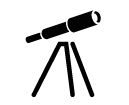
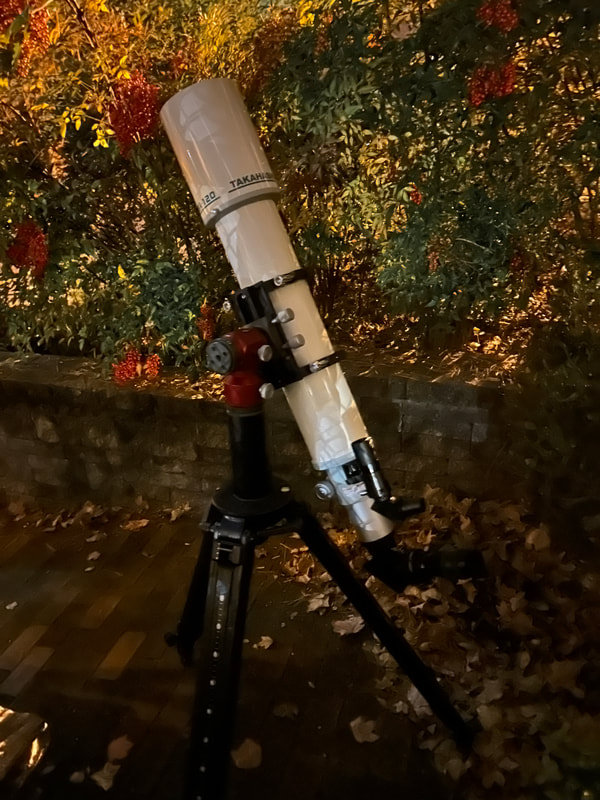
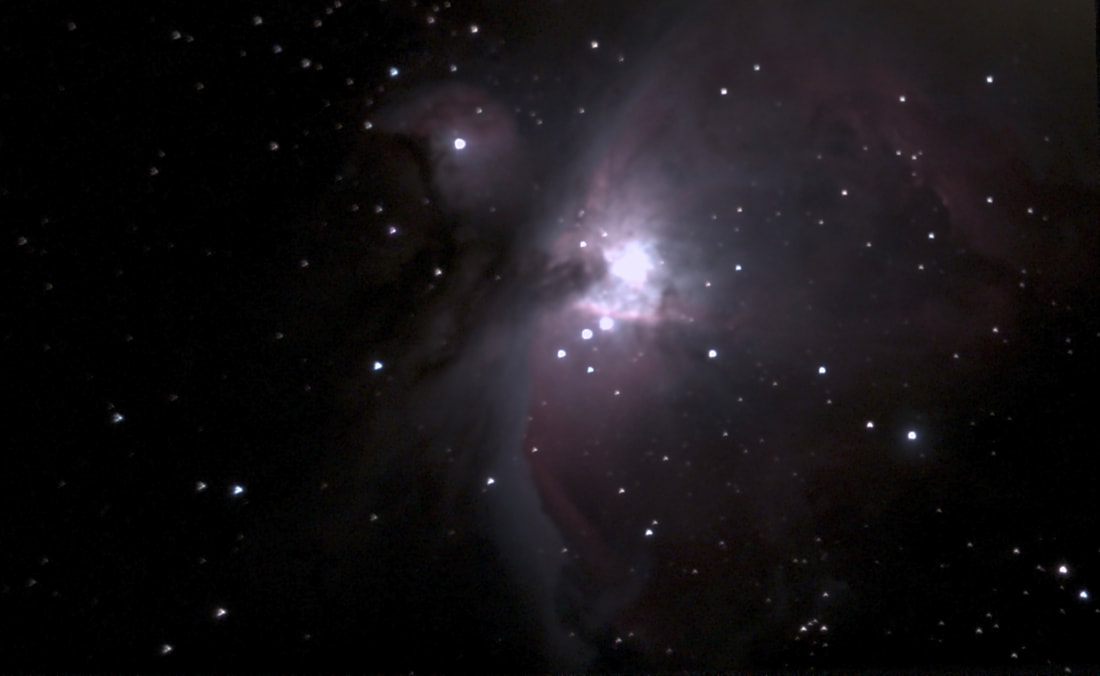
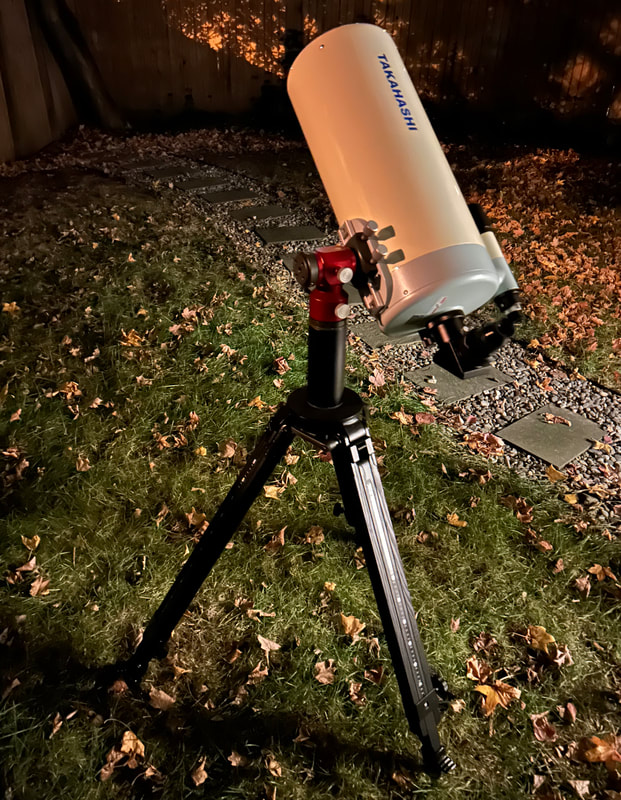
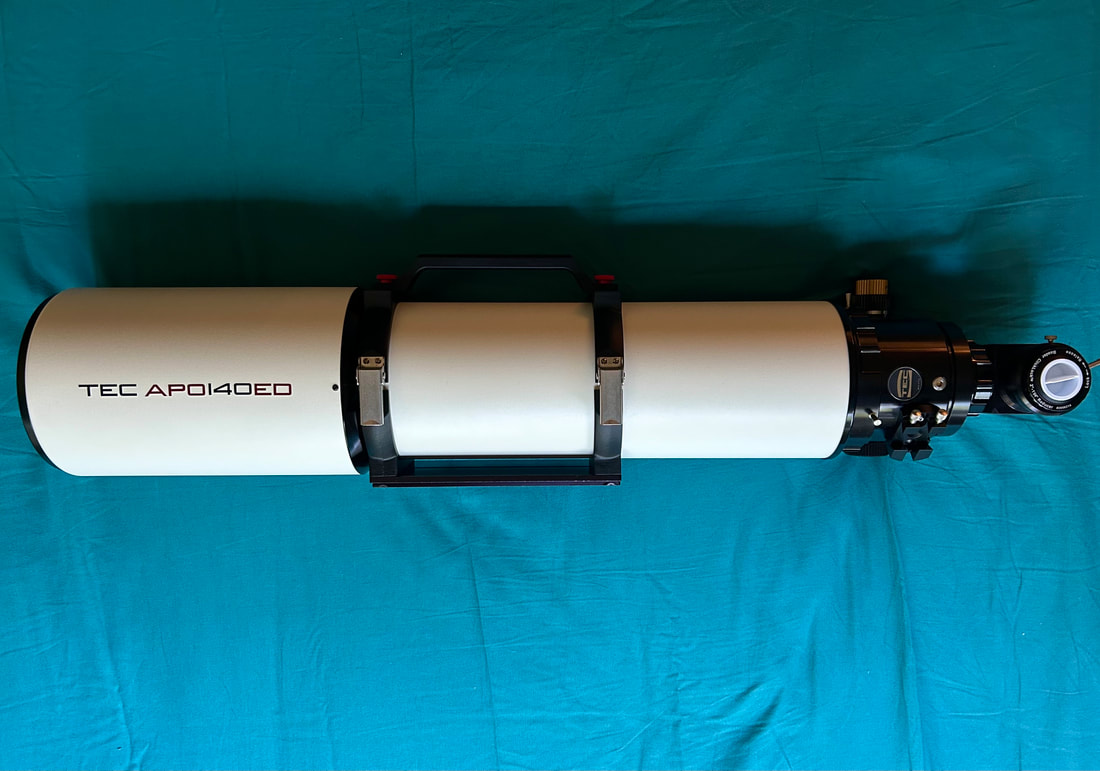
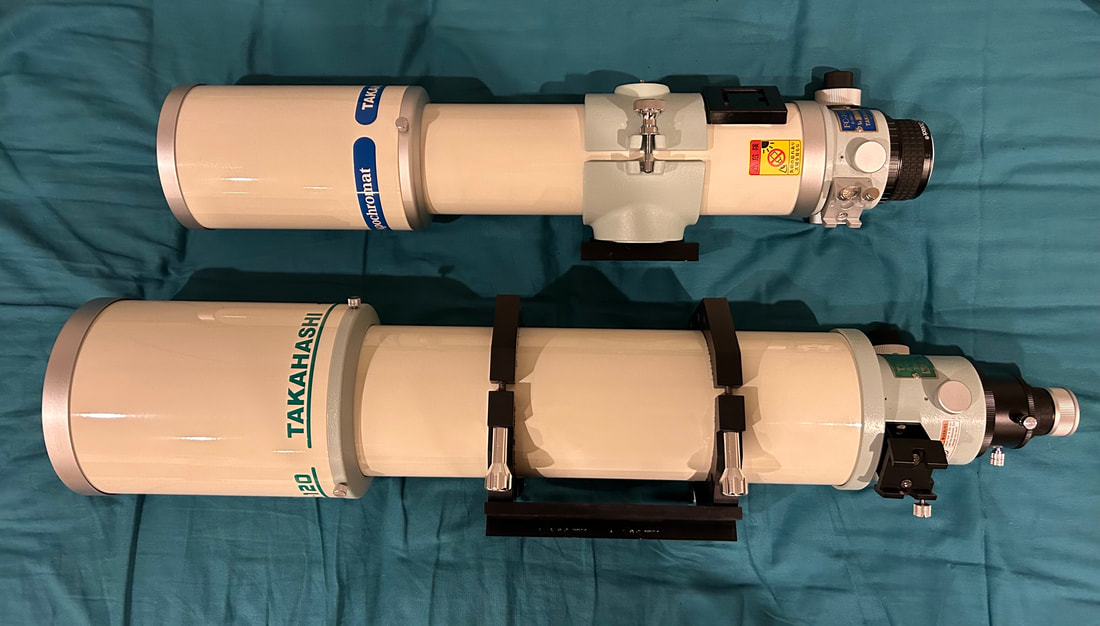
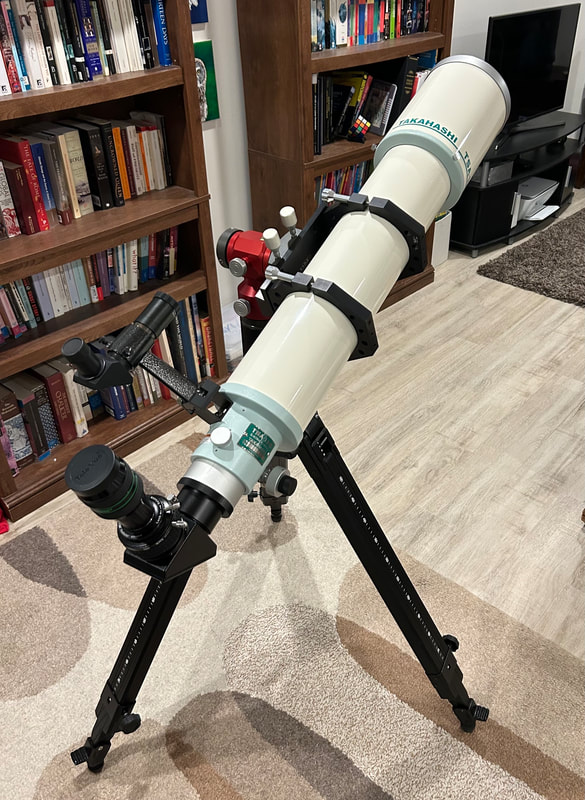
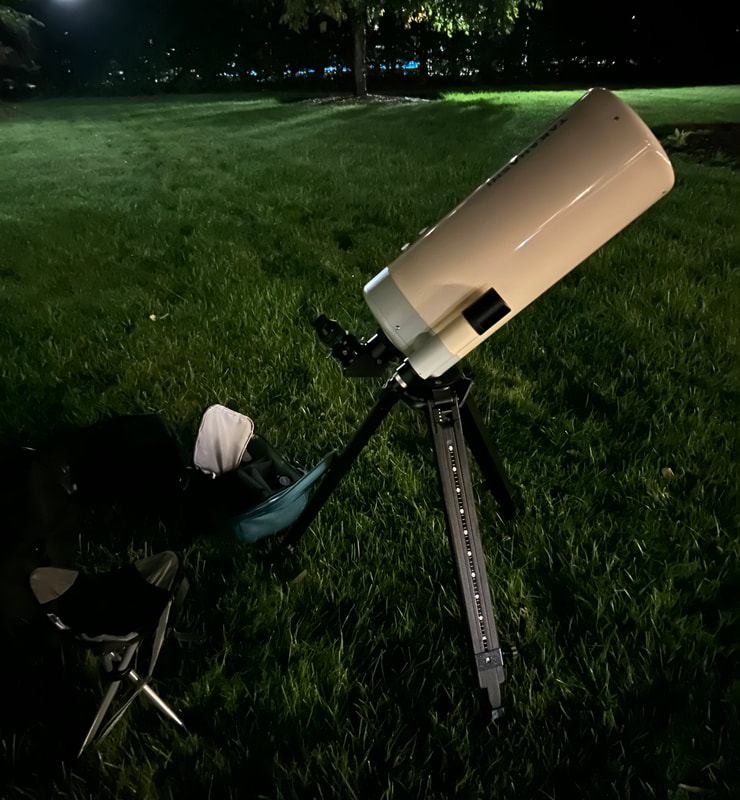
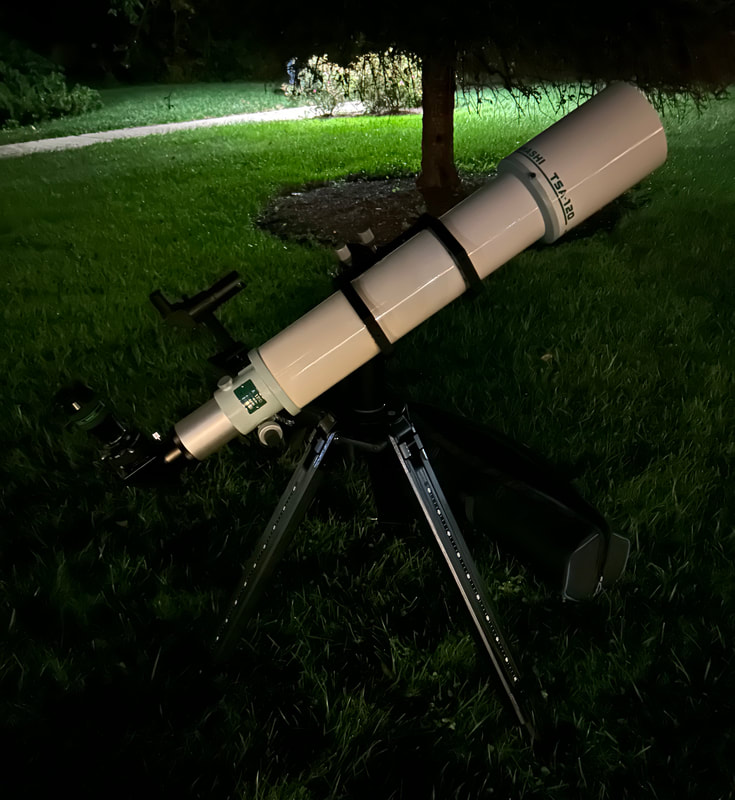
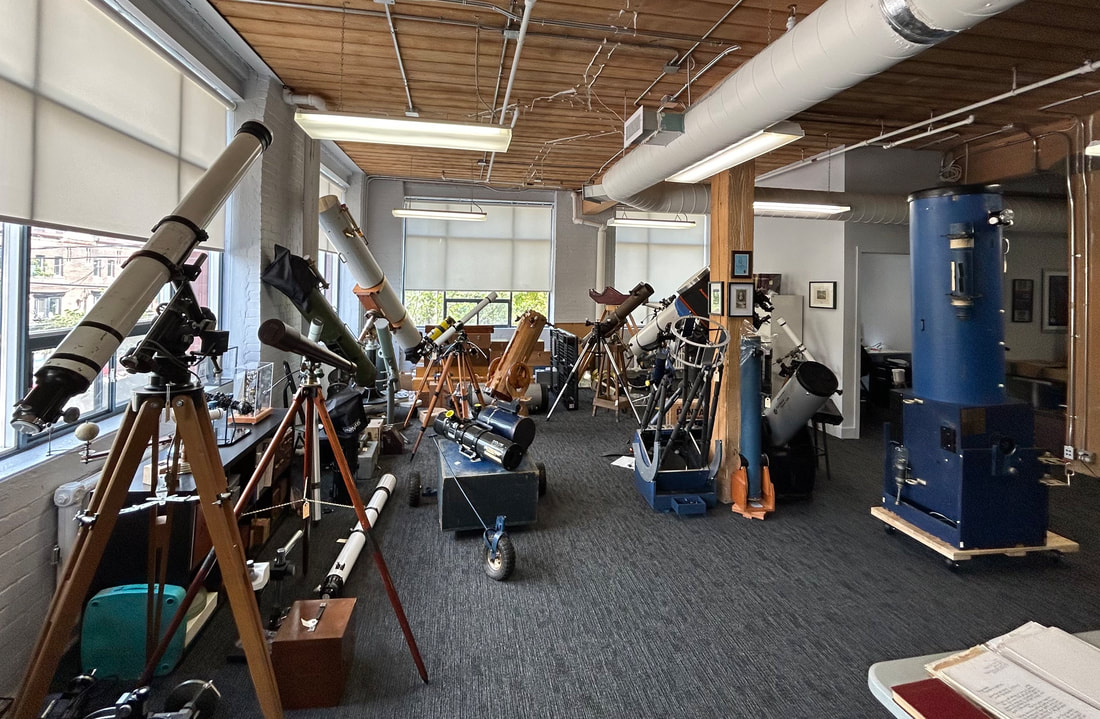
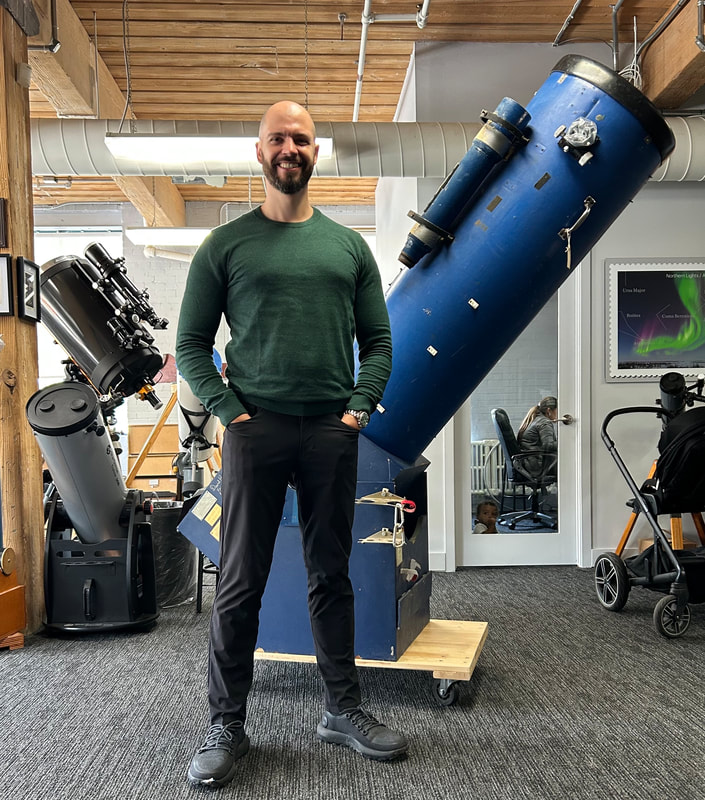
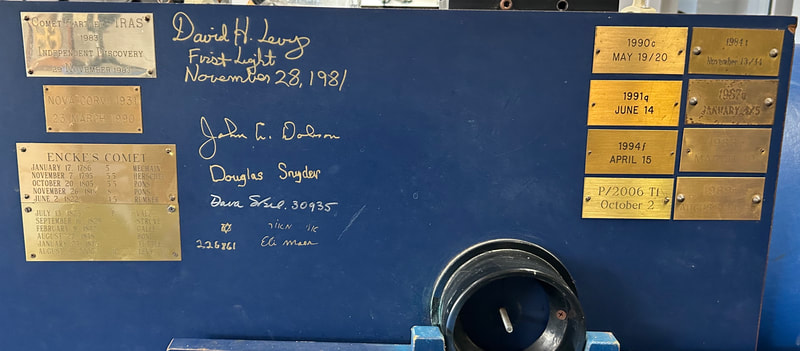
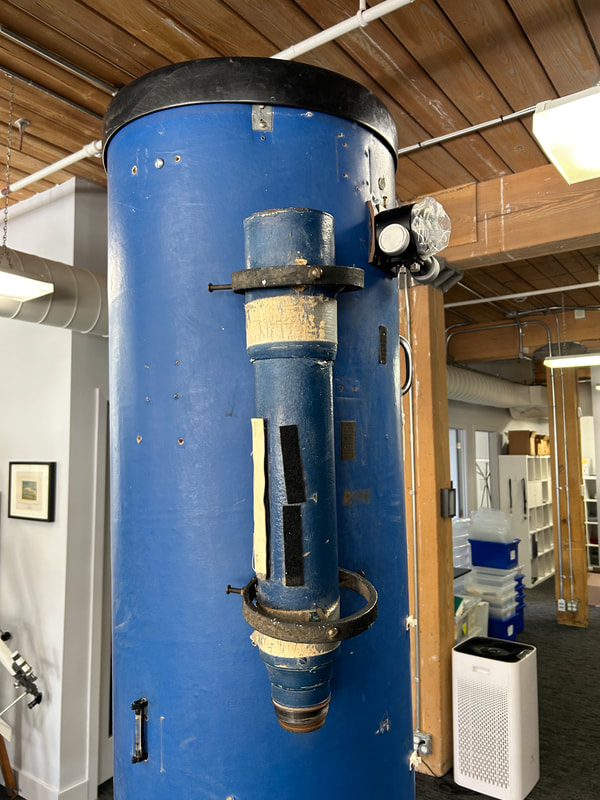
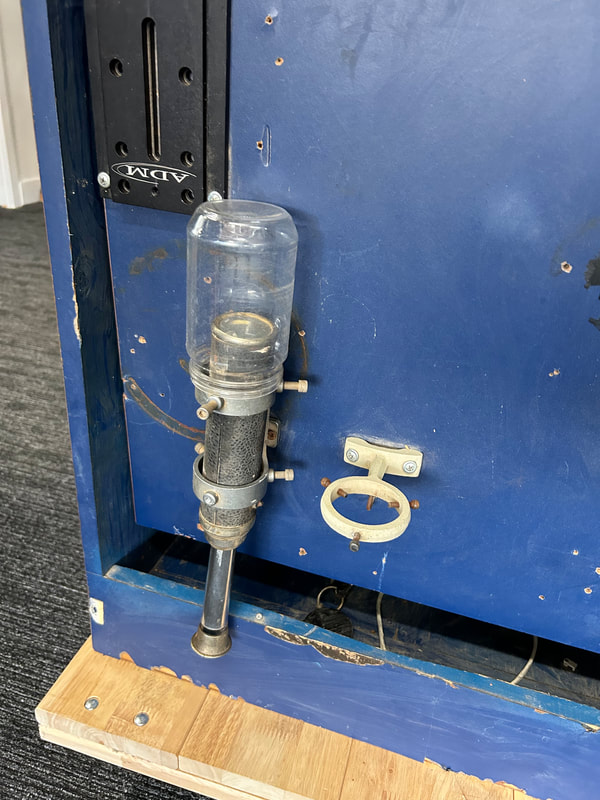
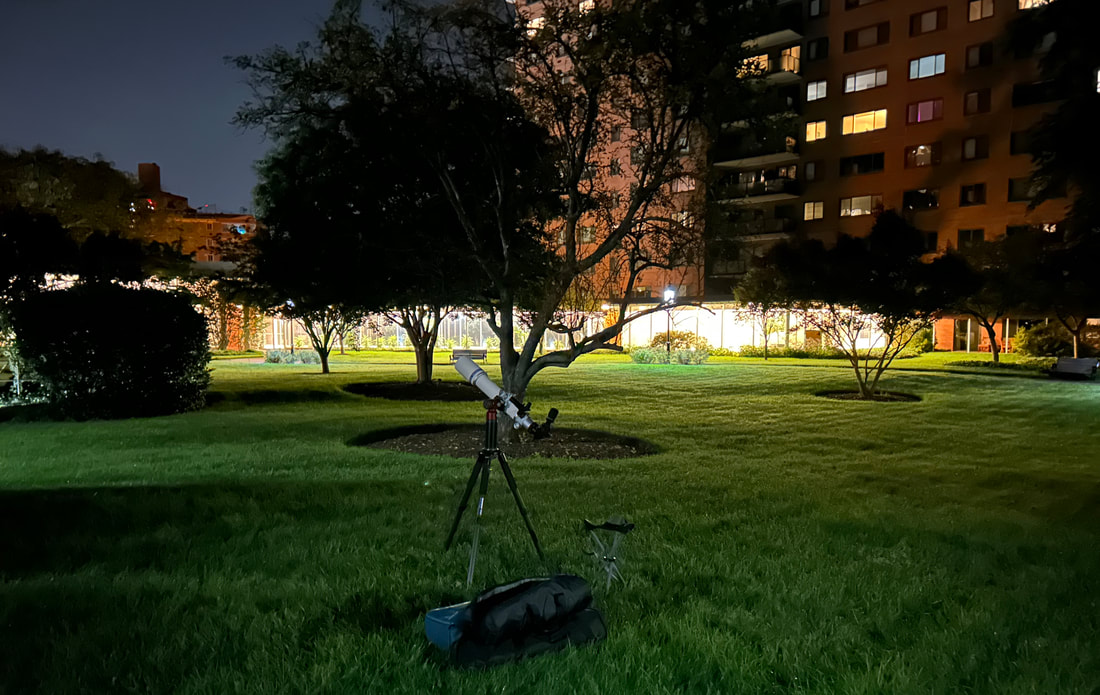
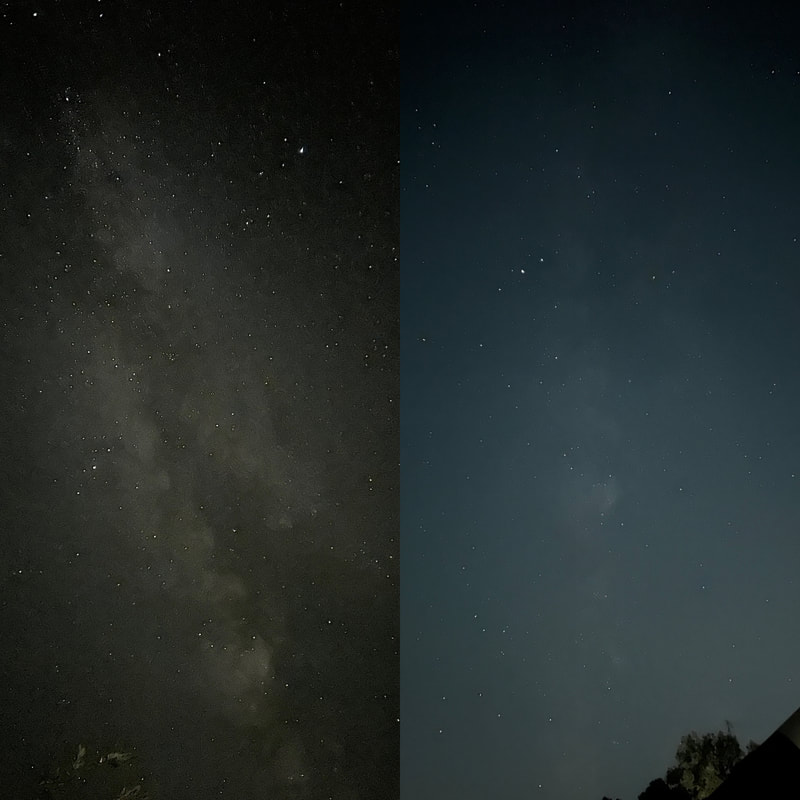
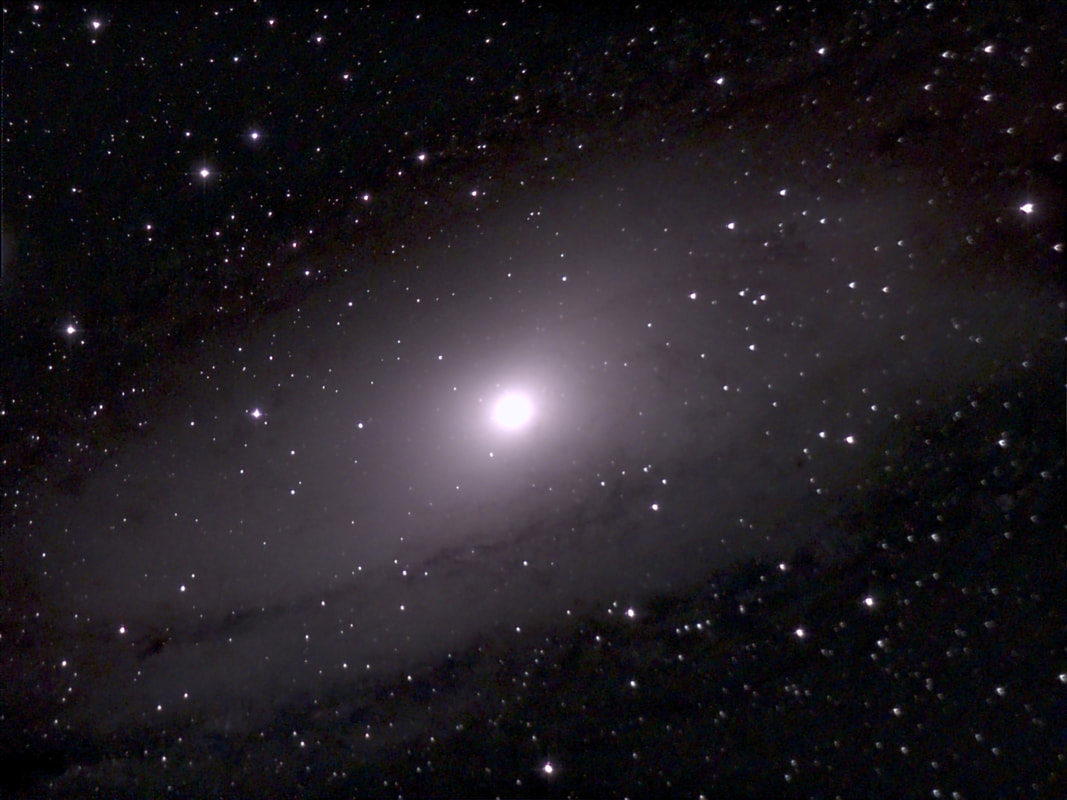
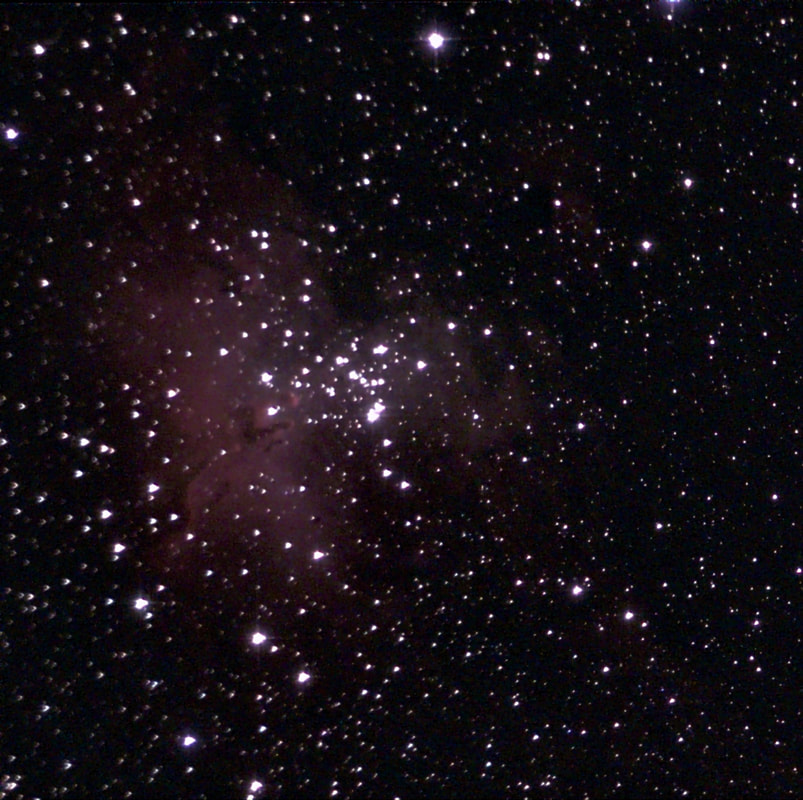
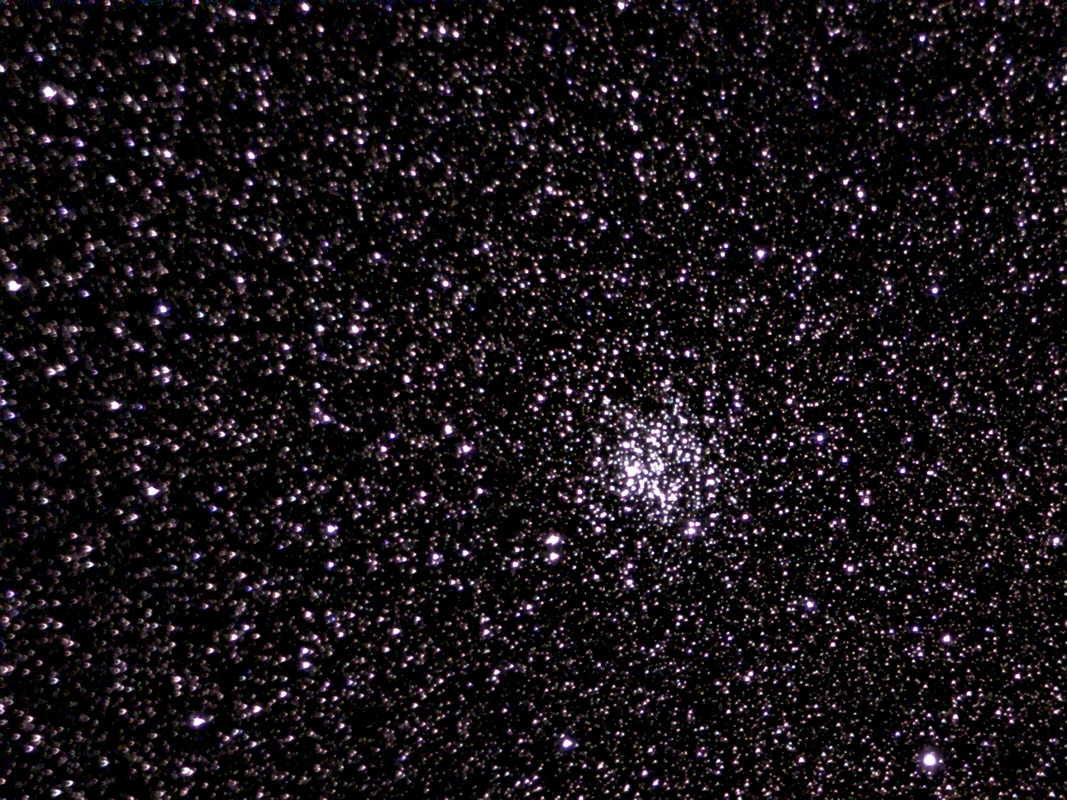
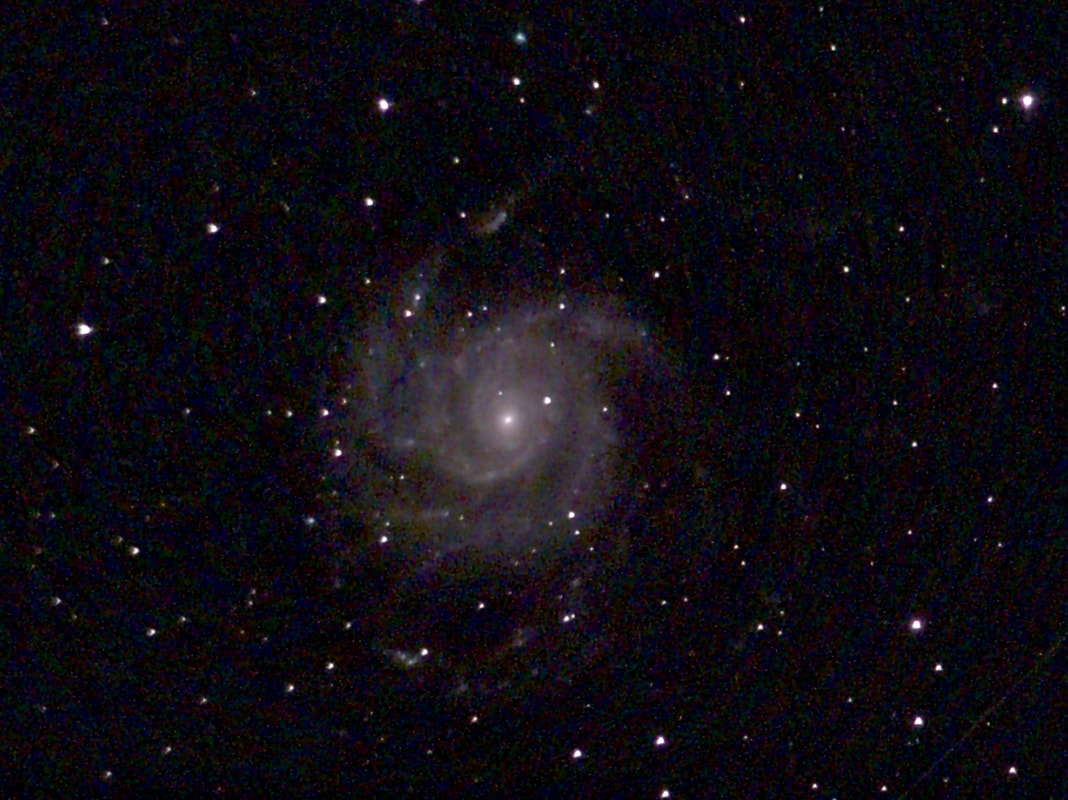
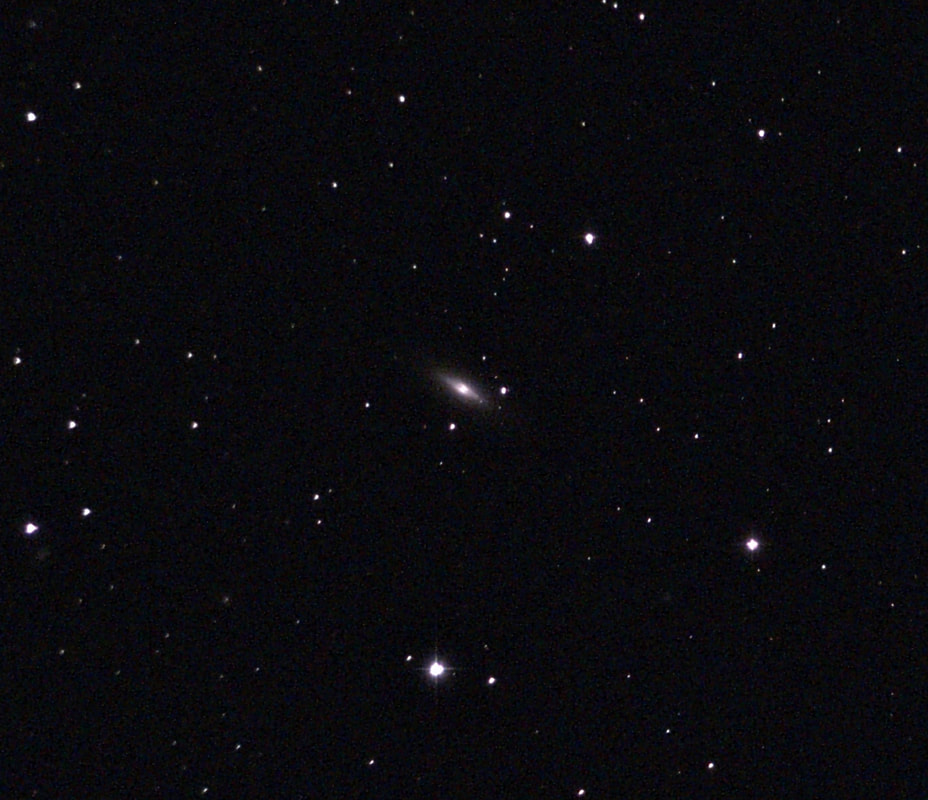
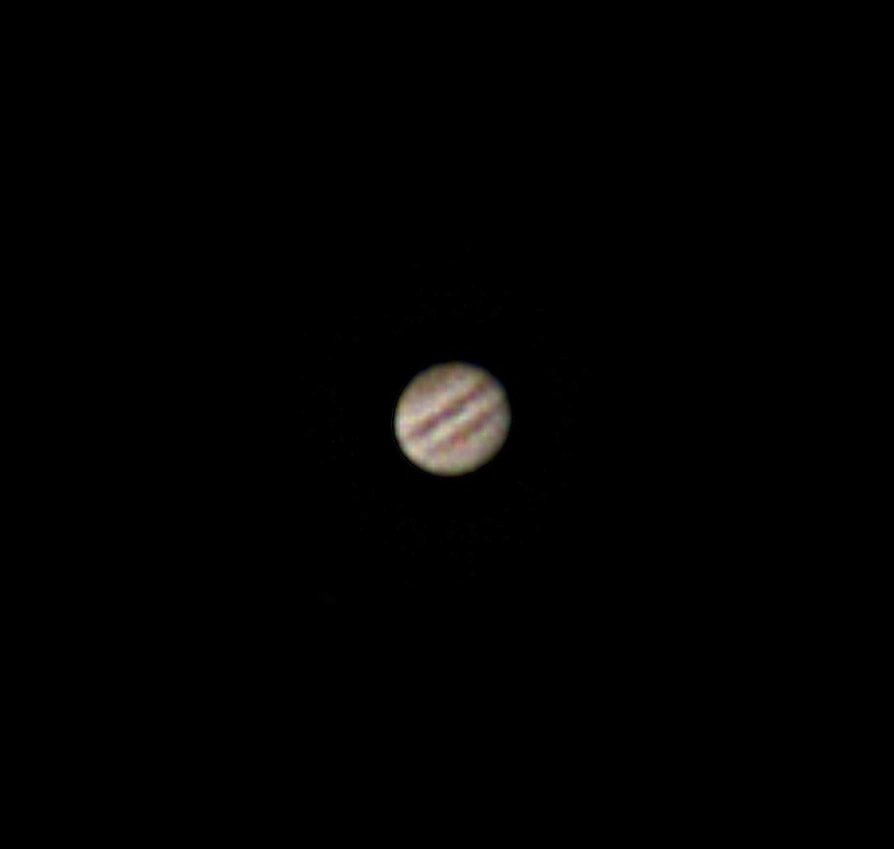
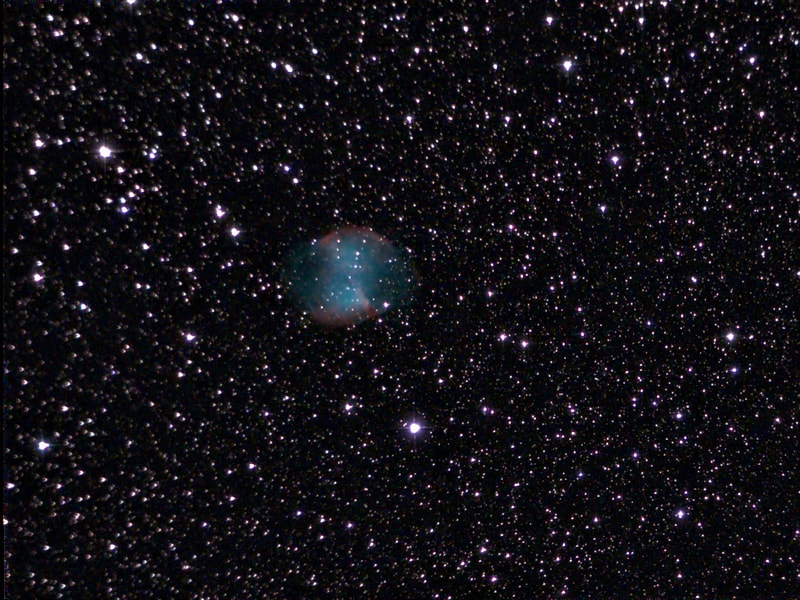
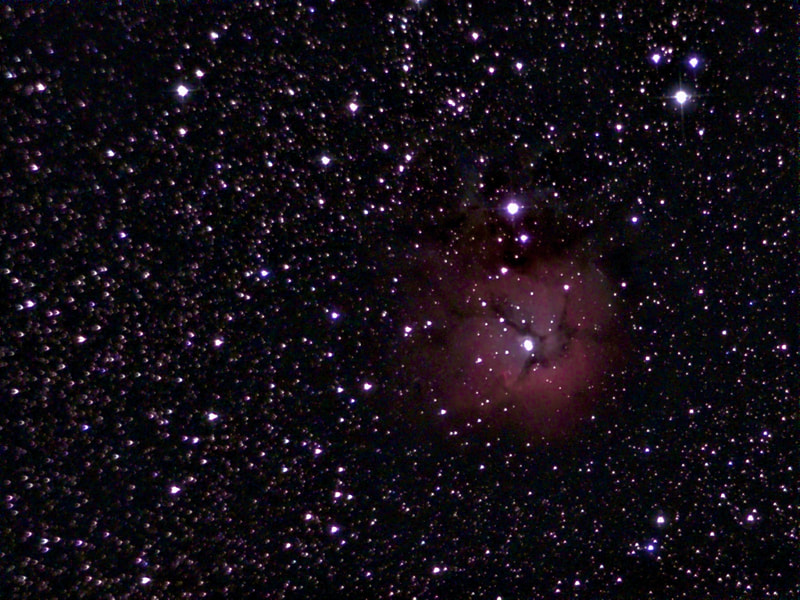
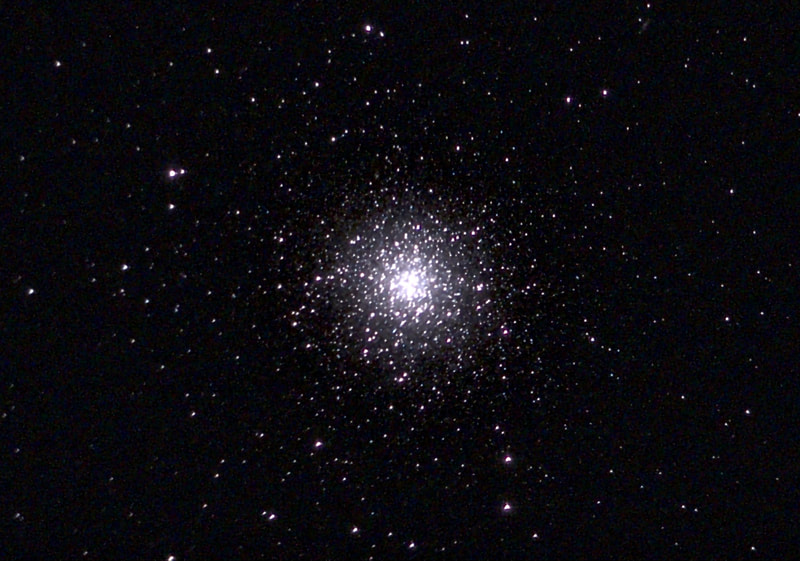
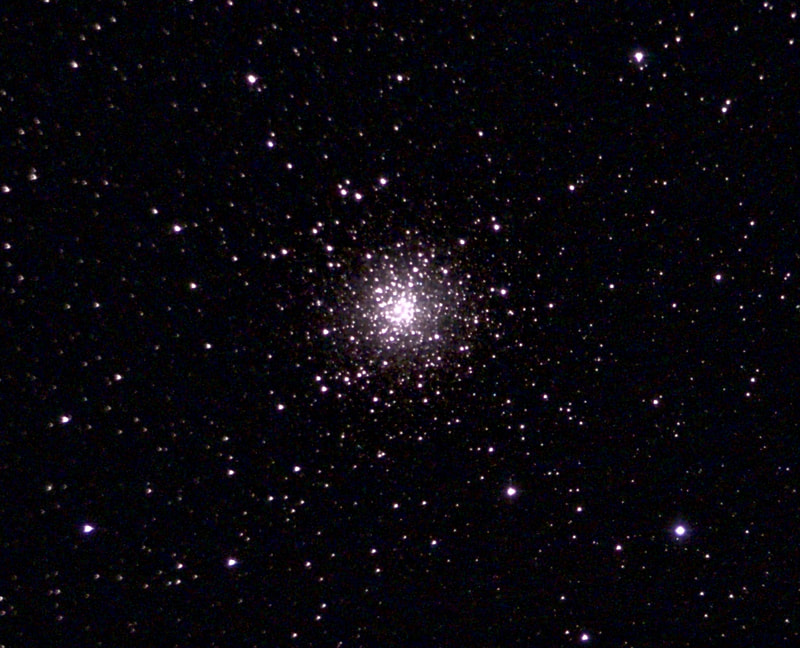
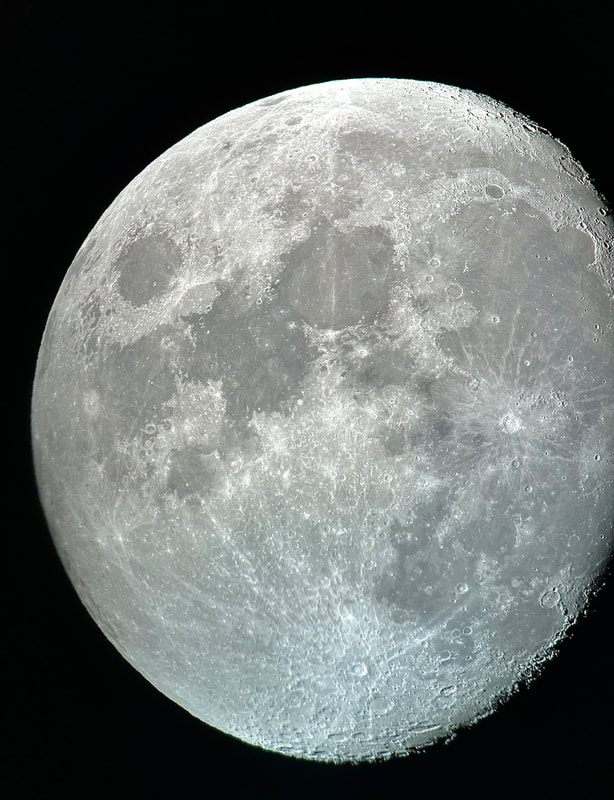
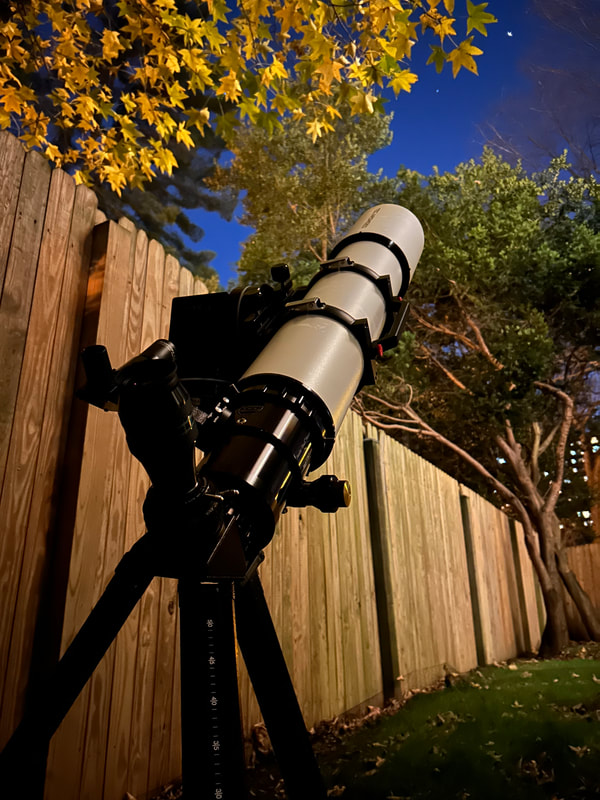
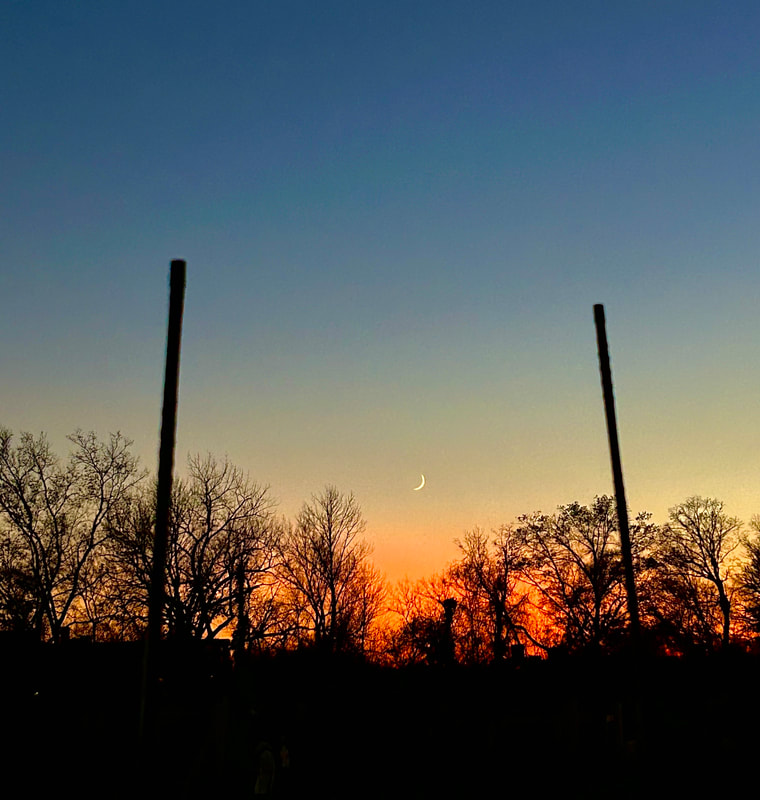
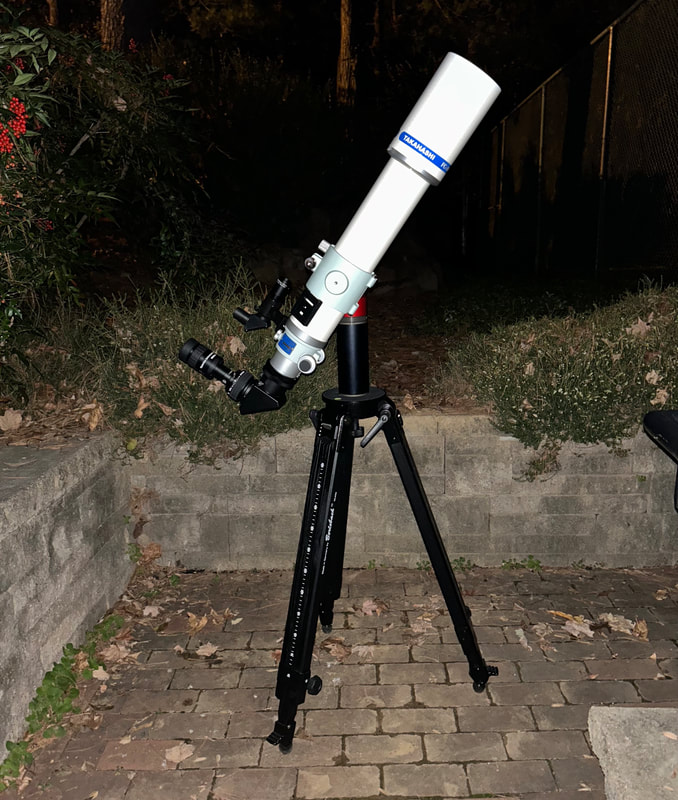
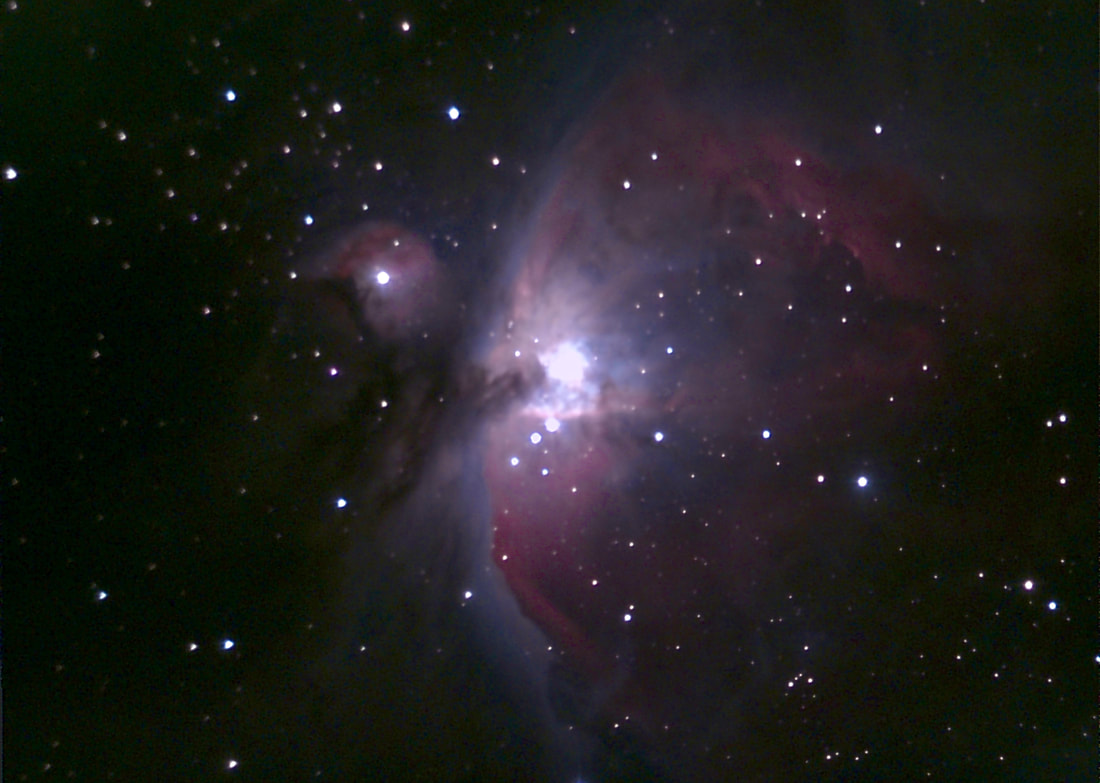
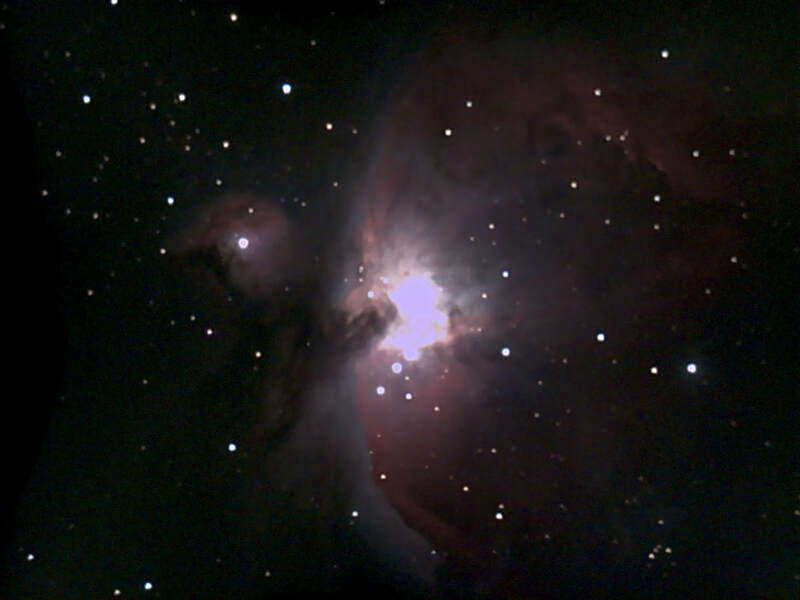
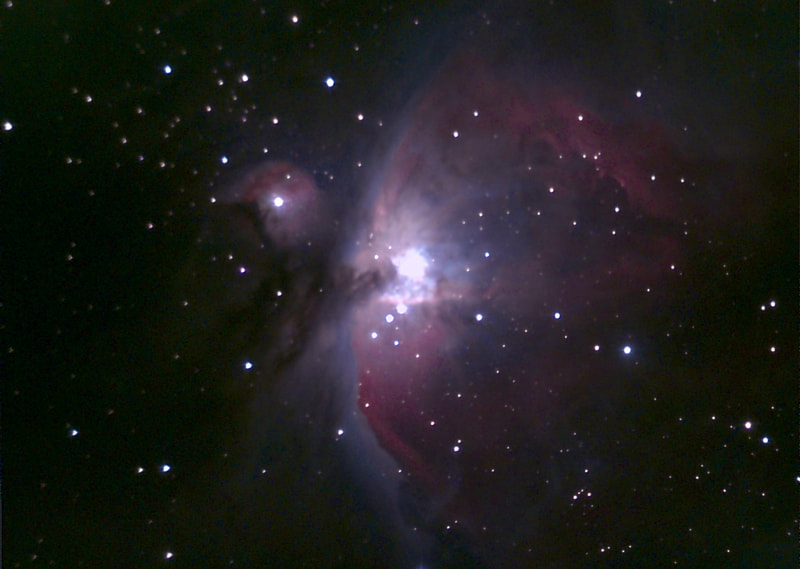
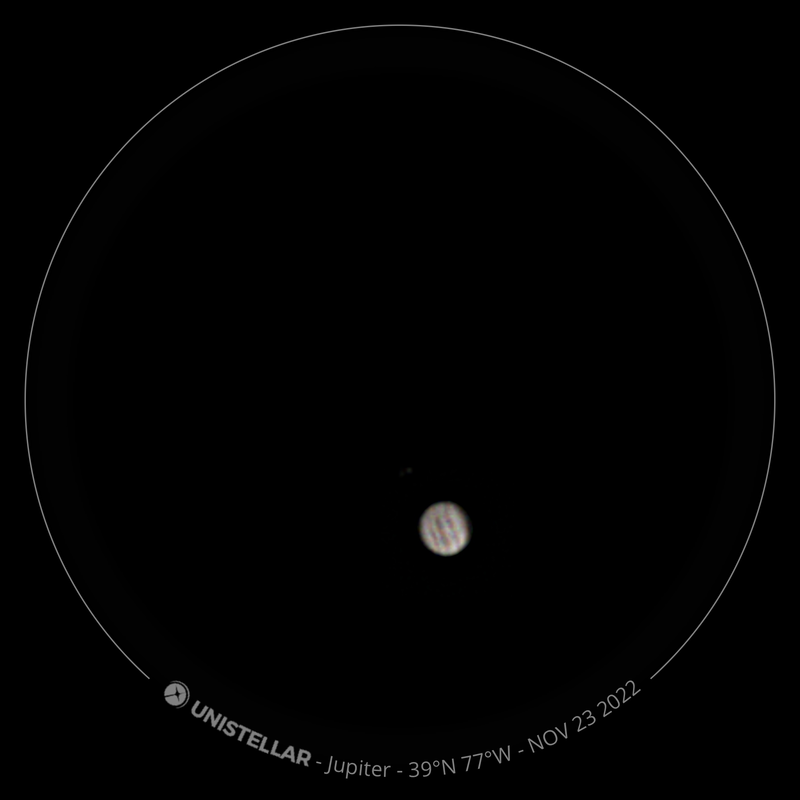
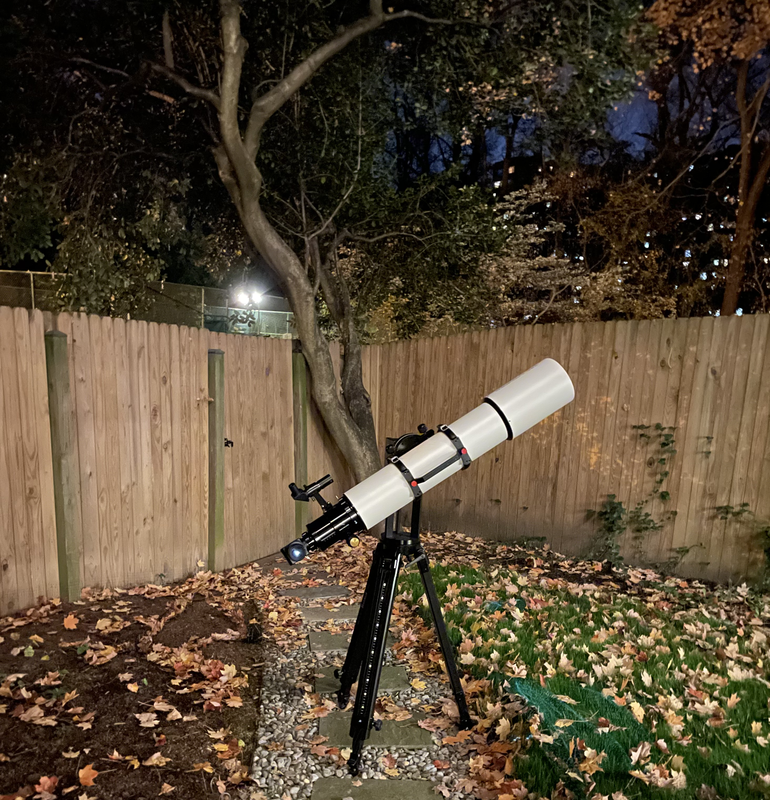
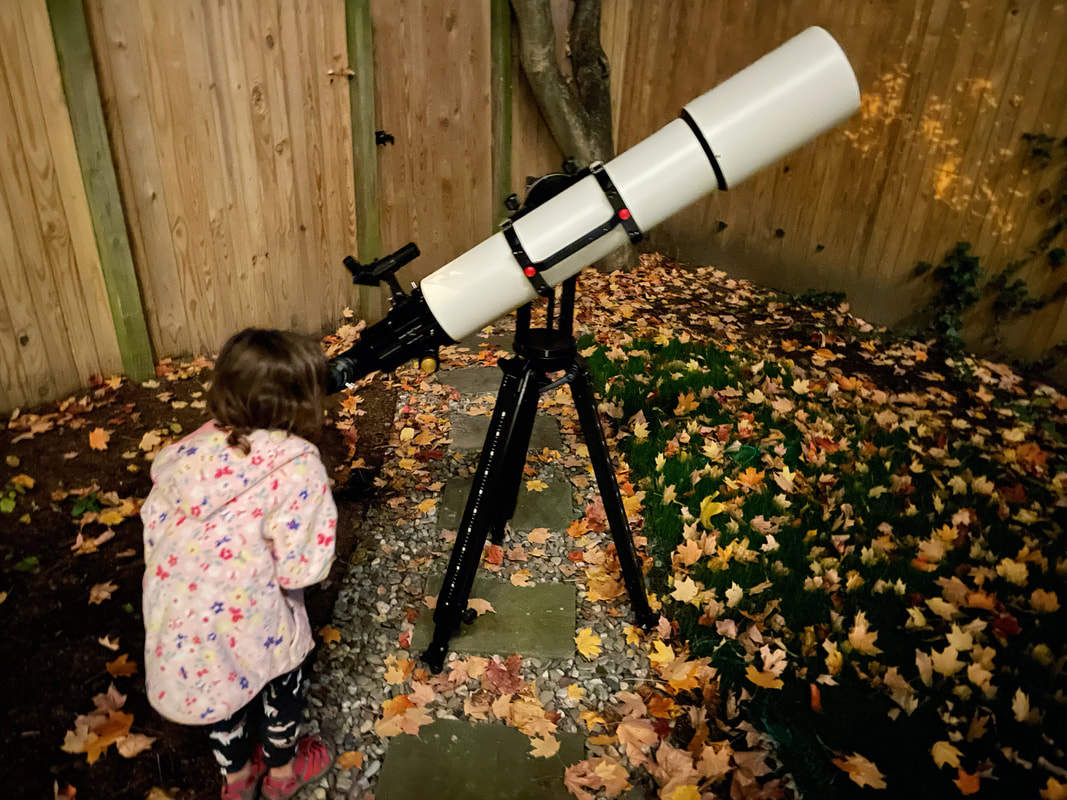
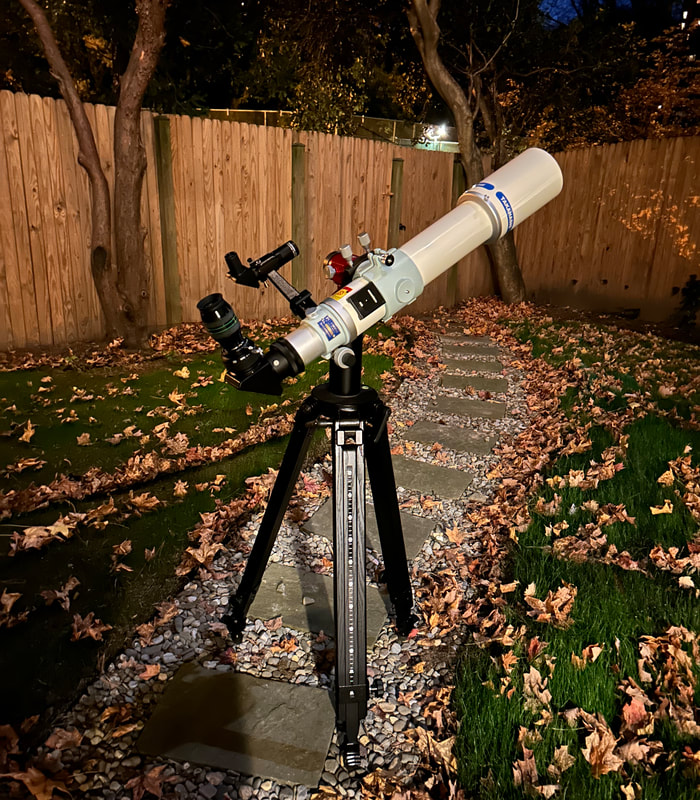
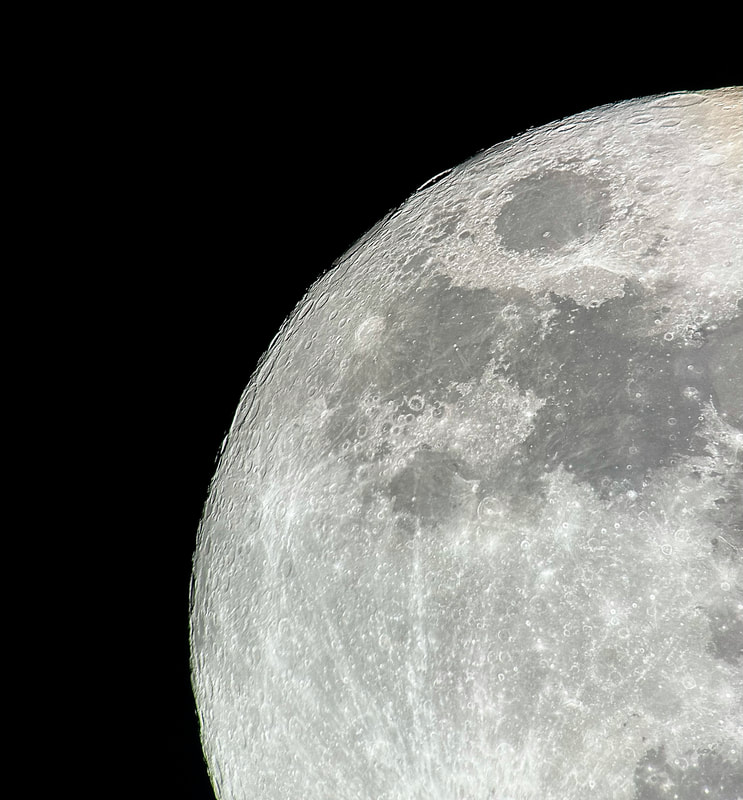
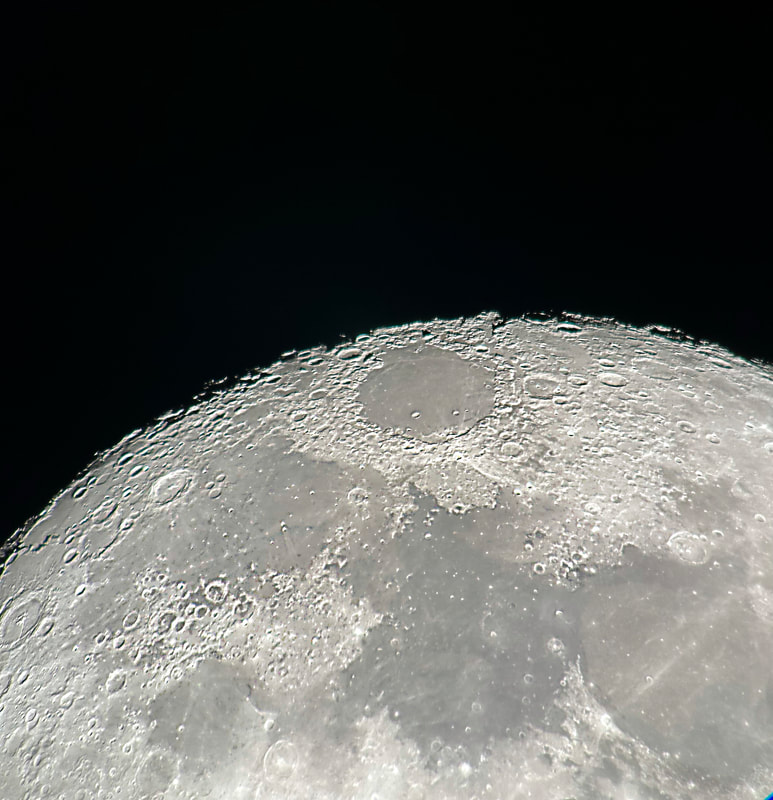
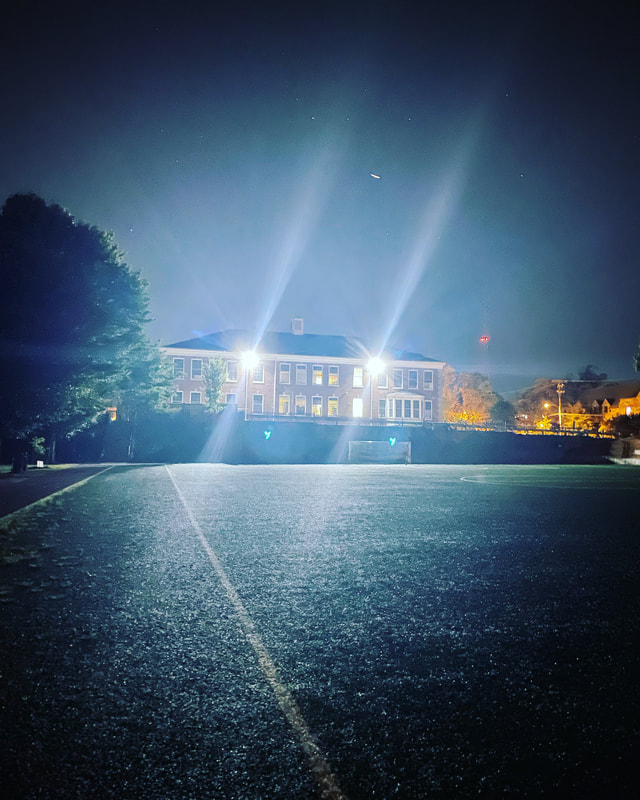
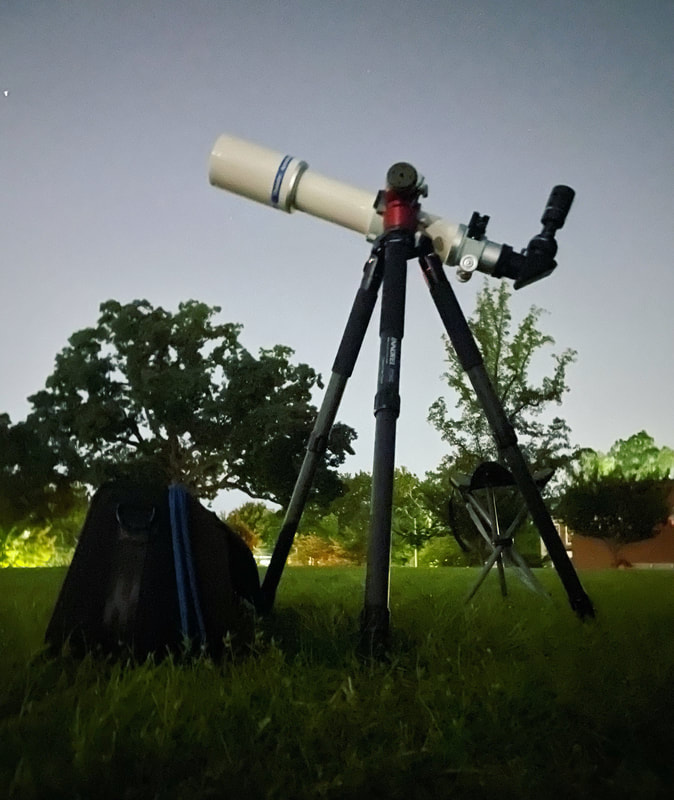
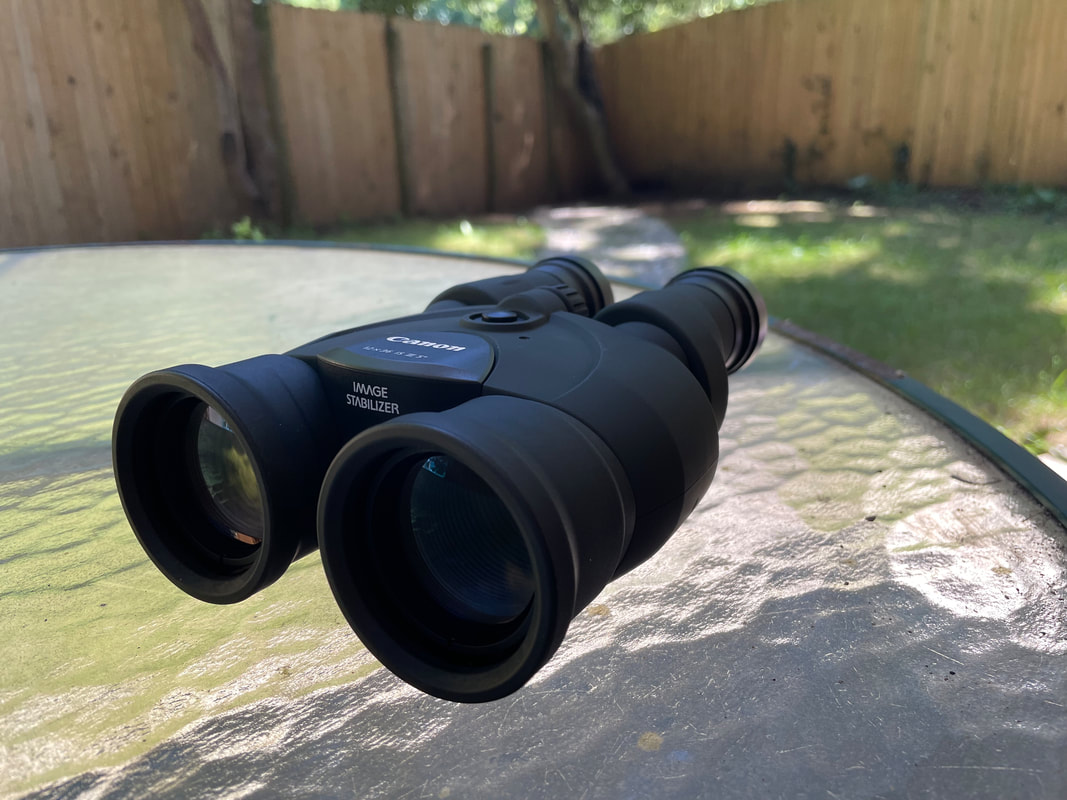
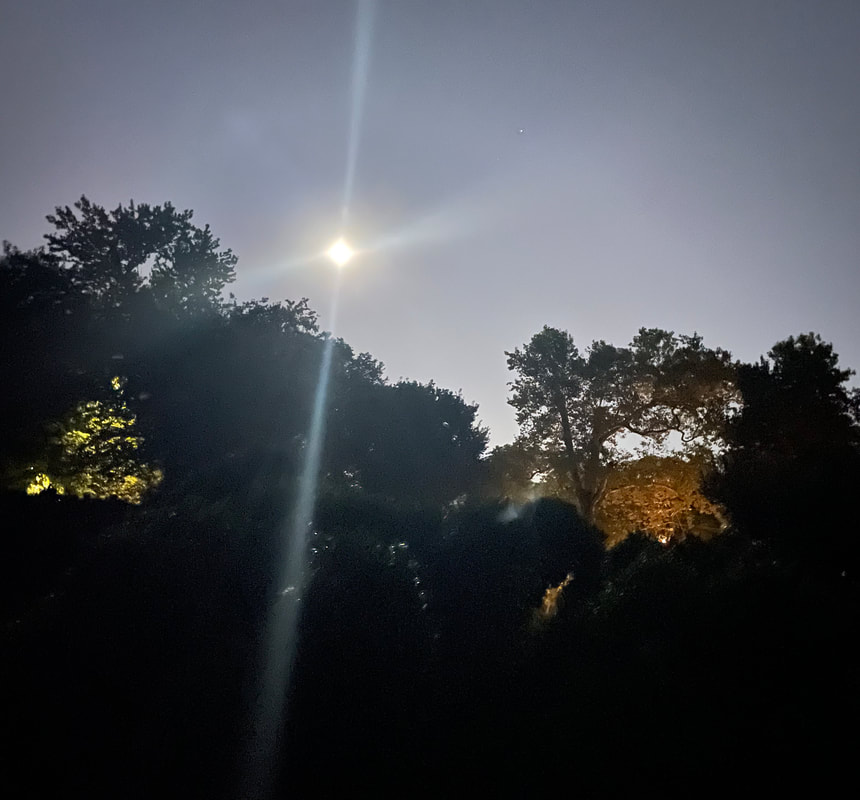
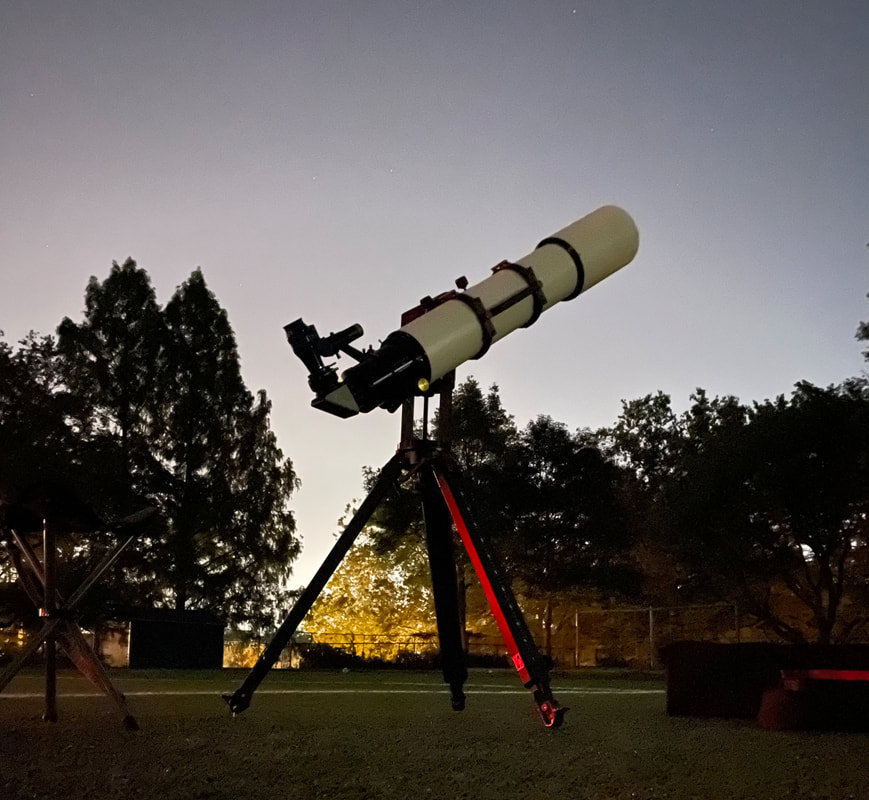
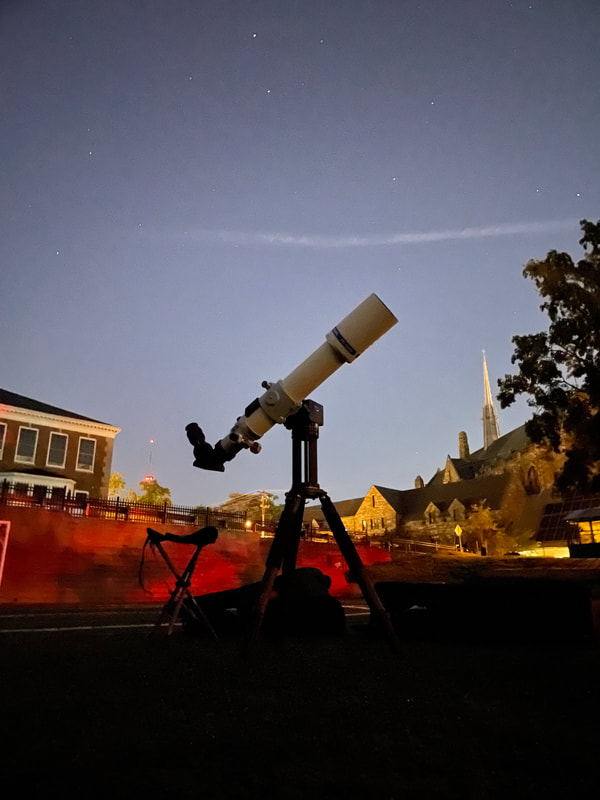
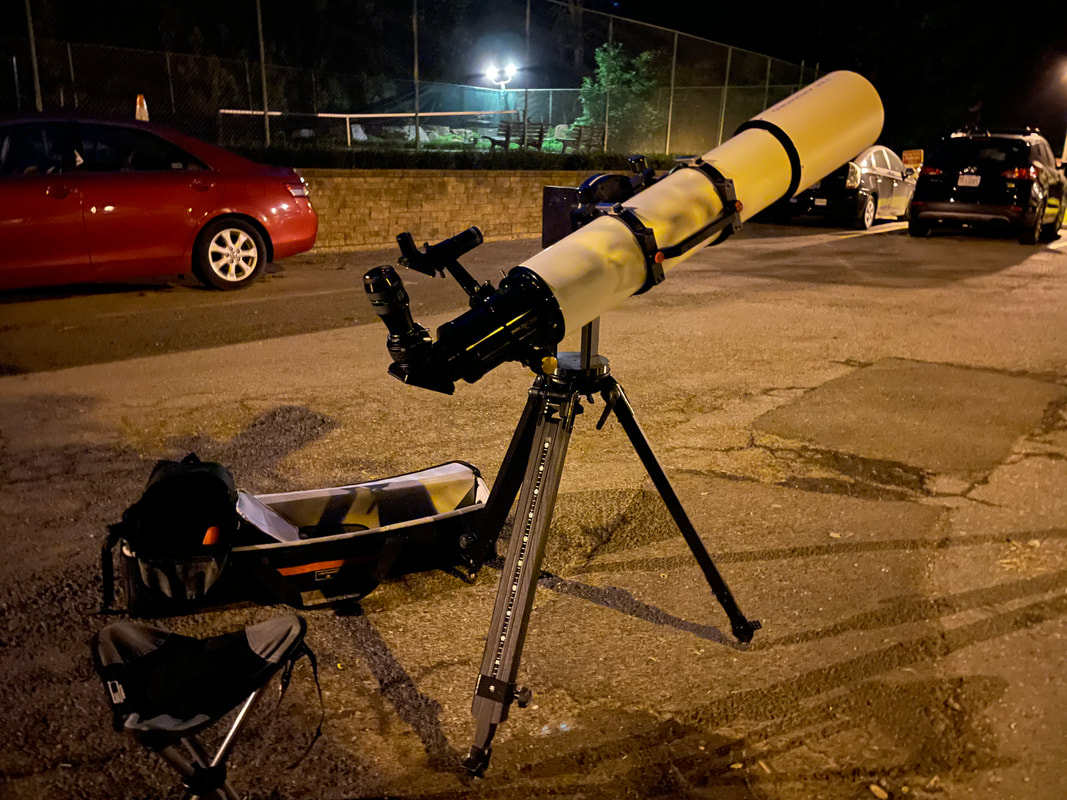
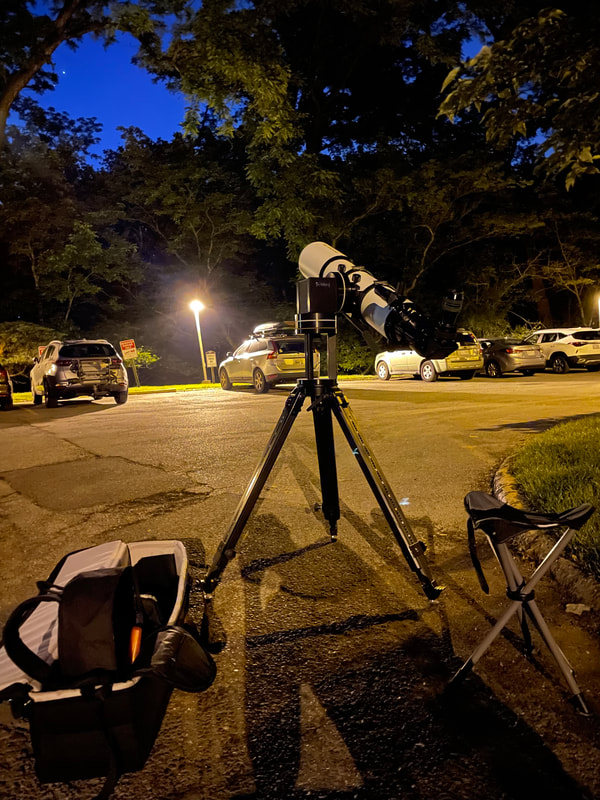
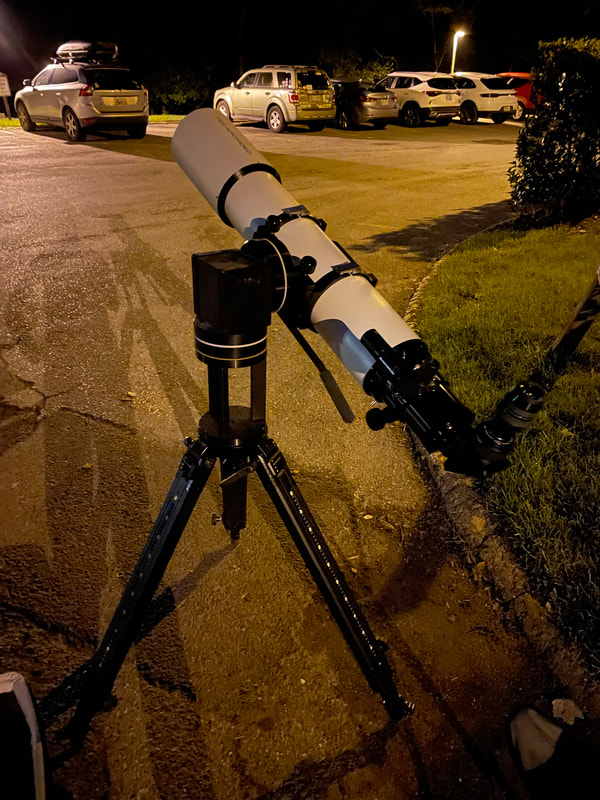
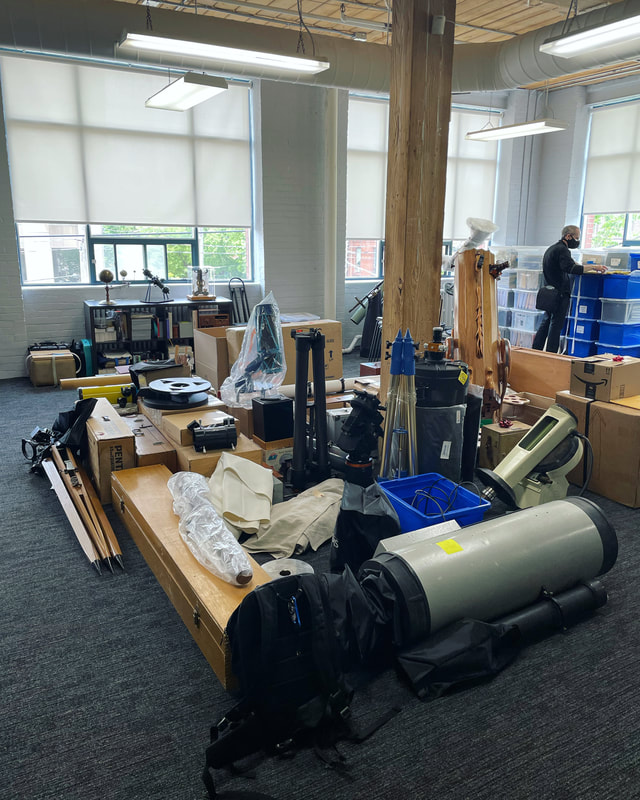
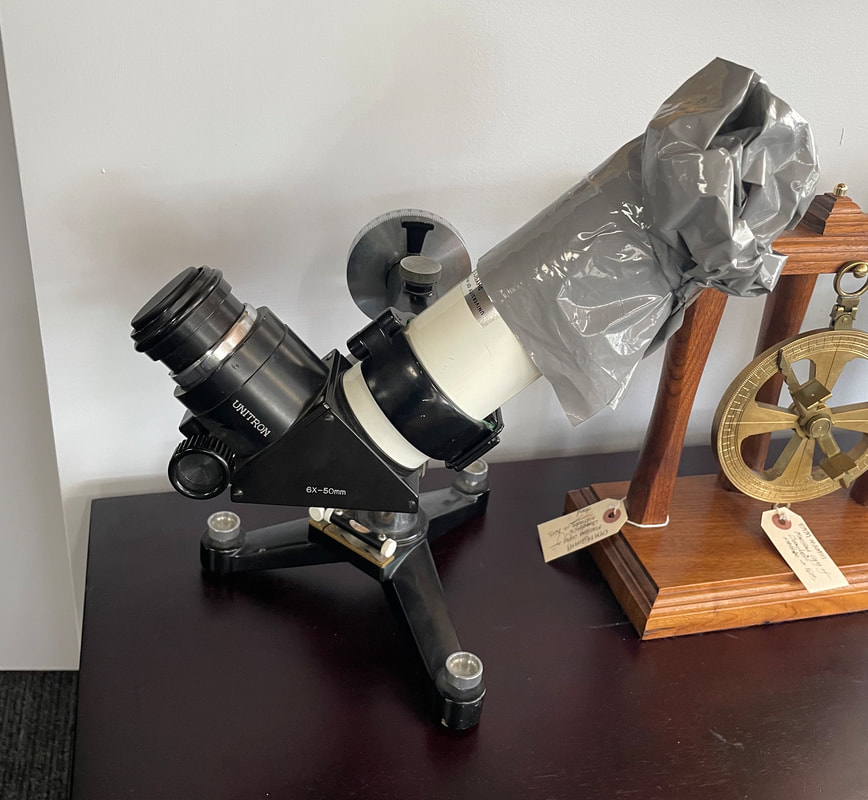
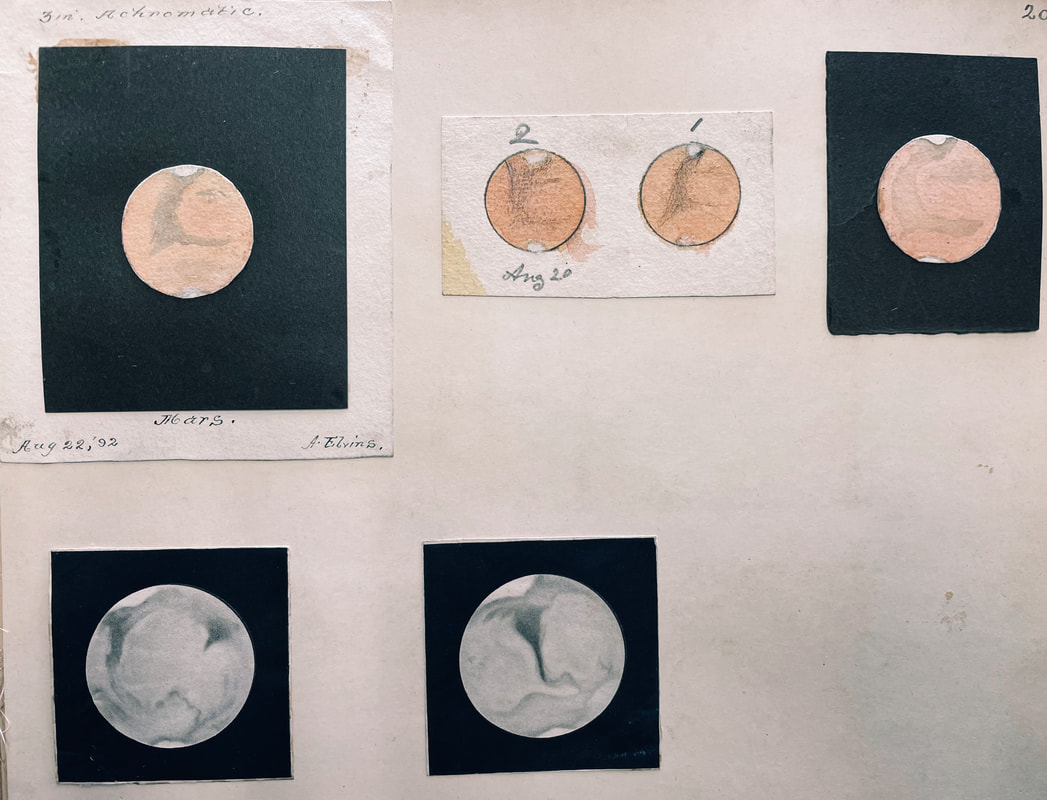

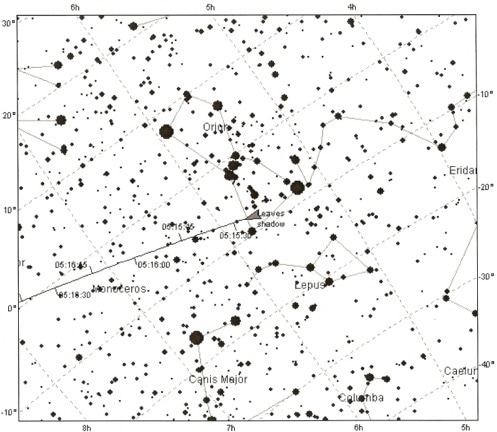
 RSS Feed
RSS Feed